Online reviews and social media are much more important when negotiating a buy or sell.

An increasing number of customers choose the dealership they want to do business with by consulting social media and internet reviews. According to the most recent Annual Automotive Customer Experience Trends study, 67% of service customers and 60% of car buyers choose their dealers completely based on online searches and reviews. Additionally, 87% of service customers and 93% of vehicle buyers stated that internet review sites aided in their decision to choose a dealership.
Working with thousands of dealers, we are aware that building a social following and a good online reputation takes time. So, these priceless assets must be taken into account and included when a dealership is bought or sold. A 5-star internet reputation is unquestionably valuable, and when it’s only a 1-star rating, there is an opportunity for negotiation.
If you are on the buying side of an acquisition, make sure that all social network logins and passwords, as well as the ability to alter them before the prior owner’s networks are shut down, are included in the contract and the transaction. Every day, we assist dealers who are unable to access their Google Business Page, Facebook, Twitter, Instagram, or other vital accounts. These accounts are crucial to their online visibility.
When they attempted to change the passwords, the reset letter was sent to the previous account owner’s old email addresses on a canceled account. Because we have contacts at every location, our knowledgeable team can obtain this information. Due to a general ignorance of page ownership, we also frequently recover logins and passwords for dealerships.
It’s crucial to have accurate and consistent business information on all of your social media accounts and on your Google Business Profile. Customers may quickly search for you online and locate you thanks to accurate and consistent business information. You don’t want the online information about your company to be incorrect.
Buyers should also ask the prior owners to hold off on closing any email accounts until they reset the logins to these important accounts as additional insurance. Additionally, buyers should get all details regarding Google Analytics and the logins for that account.
The buyer should demand the implementation of a social media policy for present staff before the deal is even finalized. This will make it more likely that any unfavorable remarks regarding a potential sale will remain online. Every company should establish a social media policy that spells out the rules for what may and cannot be posted online, including on an employee’s personal page. This procedure is considerably more crucial when a corporation is being sold.
Additionally, you might just want to start over if the company you’re buying has a terrible internet and social reputation. This includes updating your dealership’s legal name as well as its physical address. The majority of dealerships have adequate space to accommodate a move from, say, 100 E. Main Street to 102 E. Main Street. Google is unconcerned with the change in ownership. It takes note of the company address. Therefore, if you must leave negative evaluations behind, relocate a little.
If a buyer is starting from scratch, put a plan in place to obtain new ratings because occasionally no reviews are worse than terrible ones. Pre-exit surveys of your sales and service customers are the most effective approach to accomplishing this. Make it simple for satisfied customers to openly share their favorable feedback on reputable internet review platforms.
Obtaining genuine likes and followers on your social media accounts is also possible at this time. Although you shouldn’t purchase them, you can use targeted search and social media advertisements to connect with customers who are interested in your company, the cars you sell, and even the nonprofit organizations you support.
Additionally, you ought to use social advertising to create a fresh prospect database and inform nearby customers about management changes at the dealership. Targeting prospects through social media advertising, even those that are geo-targeted when passing by your store, is inexpensive yet very effective.
The majority of dealers nowadays invest time and money on their internet reputation and social media presence; they shouldn’t view these as “throwaways.” Remember their worth while negotiating a buy/sell. Make sure you have a partner like SimpSocial, who has contacts and knowledge, to help with the move.
You can obtain a free intelligence report here if you’d like to get an online social media and reputation study of a store you’re thinking about buying from or have already bought from.
Don’t imitate your rivals; instead, use strategy to develop distinctive consumer experiences.

Automobiles are easy to take for granted. Consumers can only get a vague notion of the labor-intensive process that went into making an automobile when they admire one. From concept to manufacturing, it is a complicated and strategic process that includes combining numerous individuals, abilities, and techniques.
The same holds true for client satisfaction. You can’t just make it happen overnight. Customer experience transformations are built on a solid plan that gives all parties involved—leaders, staff from all teams, and stakeholders—clear guidance. A customer experience plan is the best instrument you have for properly coordinating the needs of your entire company with those of your consumers.
A customer experience strategy is what?
More than half of the 400 organizations surveyed couldn’t agree on a definition of strategy. Sadly, “strategy” has met the same unlucky demise as “synergy” and “disruption.” It’s a true business buzzword that is overused and produces a lot of confusion.
A customer experience plan is essentially a road map outlining the course your business will take to enhance the experiences of both current and potential customers. It involves a strategic examination of internal and external variables, a unique strategic stance for your dealership, and customer-focused objectives and strategies.
Analyze the situation strategically by looking around.
You have access to all the knowledge required to develop a solid plan. Strategic analysis, also known as environmental scanning and system interpretation, is the first step in any successful undertaking. You must have a thorough understanding of your clients, your dealership, and your market position.
Learn about your customers.
Customer needs come first in customer experience objectives. To grasp your consumers’ pain points, expectations, and behaviors, you must first get to know them personally. This article on customer analysis provides some strategies to get you going.
Examine oneself in great detail.
Although most people would desire to have the same success as the IT giants, it is not practical given the differences between each business. Companies can develop goals that are realistic by using internal strategic analysis to better understand themselves.
Understanding your dealership’s advantages and disadvantages is crucial, particularly in the context of the client experience. To what extent can your strengths influence good customer feedback, and how can you best leverage them? What are your areas of weakness, and will address them help your customer experience?
Look around you carefully.
Understanding your competitors’ positions will help you create a strategy to set your business apart from the competition. What are they doing well (or better than you) when it comes to the customer experience, and what are they doing poorly (or not at all)? Perhaps they have a USP that connects more strongly with contemporary clients. Perhaps there are fewer options for customers to connect with them.
The corporate sector frequently uses the SWOT analysis technique to better comprehend both internal and external variables. It also helps to identify any prospective business growth possibilities as well as any hazards that need to be aware of and prepared for.
Establish a distinctive customer experience strategy.
Customer experience is your major differentiator, as you have already heard, and you will continue to hear this again and again. Companies used to differentiate themselves based on their offerings or pricing; today, it all comes down to the client experience they provide.
We’re talking about customer experience strategy primarily to assist you in shifting your focus to customer experience. But you must understand that your rivals are also spending money on customer experience. This means that you must make an absolute point of differentiating the experience you provide clients at your dealership. (Side note: enhancing Customer Experience doesn’t necessarily require lavish spending; rather, it involves selecting wise investments that are informed by your Customer Experience strategy.)
Creating a strategic position based on the particular characteristics and objectives of your business and your consumers is the first step in creating a customer experience difference. Your strategic analysis’ conclusions make a fantastic place to start when determining your stance.
CarMax is one company that has a distinctive posture in the retail car industry. According to Forbes, the Fortune 500 firm already has a market share lost as a result of the epidemic and makes more money selling used automobiles than any other dealer in the US. CarMax’s business approach, in contrast to that of many auto shops, successfully integrates online and physical capabilities and provides customers with a consistent experience across every engagement. Customers no longer need to repeatedly explain their demands to a salesperson when they can shop online, test drive at home, and make a purchase at the dealership.
Decide what you’re going to do and whether you have the personnel to complete it.
You can begin to transform these abstract concepts into strategic goals and strategies once you have clearly established your customer experience vision and strategic position. These goals and tactics will then be fleshed out in depth in a customer experience roadmap. This is choosing the automobile parts you want to create and how to use a well-known analogy.
You must decide which areas require improvement and how your dealership will proceed based on the findings from your analyses. For instance, you may think about developing a feedback loop to comprehend why, as well as refining your communication strategies and tools, if your objective is to decrease the amount of lost potential consumers (those who decide not to buy).
Your strategy will also outline the personnel and technological requirements you’ll need to meet your customer experience objectives.
Employees. Do you have enough qualified people on staff to meet your customer experience objectives on schedule? Consider hiring new people, assigning specialized skills to particular tasks, and how technology might improve employee productivity in this situation.
Technology. Digital technology will be used in every customer experience plan with the possibility of success to automate procedures that have a negative influence on the customer experience. For instance, customer experience platforms are tools that allow businesses to offer 24/7 rapid, and individualized service to keep customers engaged.
Repeat after making adjustments.
Some of the foundational elements of a strong strategy that will direct your customer experience transformation have been discussed. You must have a solid understanding of who you are, what you compete with, and how you will attract clients in the digital age.
You should not underestimate the significance of your customer experience approach. But it’s crucial to keep in mind that nothing is definite. Your customer experience strategy serves as a crucial road map for your customer experience transformation. However, you must always adapt to match your clients, who are always changing.
The Advantage of Videos for Your Dealership in 7 Ways.
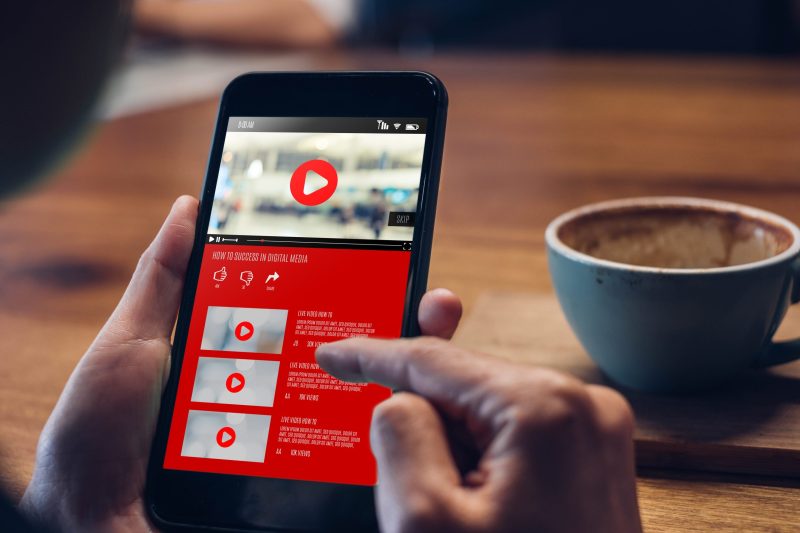
If your dealership is like the majority of them, you’re trying hard to up your marketing game. Being at the head of the pack is difficult because of the intense competition and the constantly shifting landscape of marketing alternatives. You may be exploring a variety of marketing strategies, but the video is one that you’re probably underusing.
Even if you currently use video in your marketing, there is more you could be doing to take advantage of this potent tool. Video marketing is beneficial at every stage of the consumer journey when done properly. Video marketing was employed by 81% of organizations in 2022, up from just 63% in 2021. Few techniques are as effective in converting prospects into consumers.
You can use video in the following ways to give your dealership an advantage:
1. Vehicle tours: To be effective, vehicle walkaround videos don’t need to be highly polished. These quick and easy-to-make videos offer prospective clients a clearer view of your inventory and can emphasize vehicle attributes that tempt car buyers to visit your dealership.
2. Instructional advice: How-to videos are the third most popular type of YouTube video. You may establish credibility with your audience by providing quick instructional films on monitoring tire pressure and oil levels.
3. Describe your procedure: Transparency can go a long way toward assisting you in developing trust, so why not demonstrate how things are carried out? Create brief videos demonstrating your used car inspection and certification process, lot setup, and storm cleanup. Your audience will respect you more if you are genuine.
4. Test drives: 72% of customers prefer to watch a video to understand more about a product. What more effective way to teach people about your inventory than through test drive videos? This is a fantafantastic,pressure format for presenting your best models.
5. Reviews: Even though features are fantastic, reviews on features are even better. Being truthful and upfront in your review will help you establish rapport and trust. It’s acceptable to state that a certain model isn’t always a family vehicle or that a different model might not be the best choice if you enjoy doing road trips, for example.
6. Comparing features and weighing benefits and negatives is a significant aspect of the auto-buying process. You may direct the decision-making process and provide some excellent insight into your inventory by creating a feature comparison video.
7. Testimonials: People are moved by stories, which is why they are powerful. Because they enable your audience to see and hear the emotion that lies behind the words of your satisfied clients, video testimonials are even more impactful.
These easy video marketing strategies can increase traffic and better engage potential clients. In fact, when watching a video, people retain 95% of the material, compared to only 10% when reading text, which means your marketing messages are being communicated more successfully throughout your customers’ entire customer journey.
13 Social Media Marketing Strategy Tips That Will Help Your Business Succeed

Missing the mark. fail your plan. This is particularly true when it comes to developing a social media strategy for your company and actually attracting new customers, clients, etc. You need a strategy if your company wants to make the most of social media marketing.
Here are 13 recommendations from industry professionals that have helped our thousands of clients succeed on social media!
Part 1 of a summer social media strategy guide: Keep Facebook Ads Fresh
Keep your ads up-to-date and pertinent. Keep in mind that advertising on social media is advertising. Commercial, print, and social media advertisements are everywhere. Update them on your social media platforms, please!
Customers want to see new things, so keep in mind the importance of variation and aim to incorporate it into your Facebook advertising campaign. Be original!
2. Use fresh Facebook ad formats.
Facebook Lead Ads—have you heard of them? Without requiring consumers to leave Facebook, lead advertising automatically captures client information. No matter where your advertisement is viewed, your clients will have a user-friendly experience thanks to the advertisement’s mobile-first design.
3. Properly track your Facebook ads
You can identify which efforts are effective by monitoring the results of your Facebook Ad campaigns. This is possible with Facebook conversion pixels, which track website leads in your Facebook advertising manager and let you create bespoke website audiences to reach customers more effectively with promotions and offers that are more specifically tailored to them.
4. Effectively utilize online video ads
Avoid posting YouTube videos directly to your Facebook profile, even though it might be tempting. Sharing in this method results in a post that is choppy and unprofessional. Post your videos directly to Facebook instead. They automatically start playing, look better, and get more clicks.
5. Regularly check for comments on advertisements
Without follow-up, an advertising effort is essentially pointless. The effectiveness of a commercial depends on how consistently it responds to inquiries about it. Although comments on ads may not show up on your timeline, they may contain questions about your goods and services. As part of your Facebook marketing strategy, review your advertising for leads and comments.
Online Reputation Management Tip #6: Get Favorable Comments on Important Websites Like Google
Consumers who study a company online before making a purchase utilize Google in 89% of cases. Customers will still see reviews of your company even if they aren’t actively looking for them because Google now displays reviews from throughout the web.
One of the most effective ways to maintain your internet reputation is to search for and view your company from the perspective of a potential client. Look for keywords that people might use to reach your company or group, and keep in mind that a good internet reputation is an insurance for whatever money you spend on marketing. A full-time career could involve administering, enhancing, and watching over your social networking and review sites.
7. Keep an eye on Yelp and take advantage of check-in offers to get more reviews.
Millions of people read reviews on Yelp. When Apple customers are looking for directions to your company or group, they will also see your Yelp rating because Apple even features Yelp ratings in its Maps program.
Another piece of advice is to use check-in promotions to make your positive Yelp reviews “stick.” With upgraded Yelp profiles, you can restrict competitor advertisements from appearing on your page and better promote your company.
8. Avoid trying to manipulate the system.
Negative reviews are never welcomed by a company, but getting more positive ones will “push” the poor ones to the bottom. However, the good ones must be trustworthy. In fact, providing gifts or any other form of payment in exchange for evaluations is prohibited. Another temptation would be to hire a business that provides this service or make up fictitious consumers to submit fictitious reviews. Yelp and other review sites are too savvy for such strategies, and your business will suffer as a result.
9. Regular Website Checking
Are you aware that search engines may replicate your company? To ensure that the information returned by online searches is reliable, it is vital to verify websites frequently. We keep track of and maintain more than 325 sites for our clients to boost SEO, and we can do the same for your company or institution. Get a free Intel report from us to find out how you appear online and to receive expert advice on how to look even better.
Publish & Distribute on Social Media
10. Maintain Relevant, Up-to-Date, and Error-Free Content-Free
Keep it tidy. Avoid using jokes (that maybe only you find humorous) or religious stuff that could be seen as even the slightest bit divisive. Keep the information current and fresh as well. Include your most recent offers, promotions, and regular activities.
Keep in mind that visitors may assume you are out of business if your content is outdated. Verify the veracity of the information. Before posting, make sure to double-check your work for accuracy and presentation.
11. Commenting on Posts Generates Leads
The main focus of social media is engagement and communication. If you don’t check your posts for comments, how will you know if someone is inquiring about the automobile you’re selling or the course you’re offering? Comments can be leads. Avoid developing a reputation for being unreachable. You also don’t want any comments, positive or negative, to be disregarded! Recall to express gratitude to those who provide positive feedback and address the issues raised in the negative feedback by taking the topic offline right away.
12. Carefully promote posts
Post promotion is a fantastic strategy to increase revenue-generating content for your company. Although Facebook has an auto-promotion tool, it is not advised to use it as not all content will link back to your company.
Examples of posts that aren’t about business include: – “It’s reading month. Check out these wonderful books to enjoy during the summer!
-Inspirational Sayings
Promoting these articles won’t bring customers back to your store. Content that includes links to other websites will, in fact, only help those websites. In the worst-case circumstances, these promoted postings can send visitors to a different website that has rival advertisements on it! Make sure to only share content that has a link back to your company.
13. Check to see if your images are clear and the right size.
The last piece of advice we have is to make sure your business’s photos and reels are clear, informative, and branded. Make sure to change the image’s size if you decide to use it on Facebook, TikTok, YouTube, or other social media platforms. Test the image frequently to see it from the perspective of a different client. Change it if it appears unprofessional. Additionally, bear in mind that everything you publish will have your profile image connected, so try to present yourself in the most professional and recognizable way for your company.
An Overview of Three Steps for Using Facebook and Technology to Boost Used Car Sales

This year, Cox Automotive predicts 39.5 million used-car sales. According to a senior economist for the National Automobile Dealers Association, the average monthly payment difference between new and used cars is continuing to widen, which will probably lead to more buyers turning to the used-car market. Is your dealership outfitted with the latest technology to win this year’s used car sales?
In the past 12 months, 60% of people who purchase used automobiles have seen or heard a social media advertisement that prompted them to act. 83% of people who purchase used cars are frequent Facebook users. This year, dominate the used-car market by connecting with active buyers on Facebook, where they are already spending time. There are three actions that your dealership may take on Facebook right away to boost used car sales.
1) Post used goods on Facebook Marketplace/ TikTok
According to a recent study, 66% of auto purchasers claimed they would buy a vehicle on Facebook Marketplace/ TikTok. When it comes to bringing your inventory in front of these potential automobile purchasers, your dealership has options! You have two options for promoting your used inventory feed: either manually uploading the individual used cars you wish to move off the lot or working with a Facebook/TikTok-approved vendor who will submit your whole feed for you.
Your dealership can contact nearby vehicle consumers on a website where they are already probably looking by posting your inventory on Facebook. 61% of consumers between the ages of 18 and 54 have bought something on Facebook Marketplace/TikTok. It makes no sense to not present your goods to this audience of buyers who are ready to make a purchase.
2) Keep an eye on and reply to messages in the Facebook Marketplace.
Due to Facebook Marketplace’s simplicity and speedy responses, 93% of users rate their experience as favorable. Make sure you are keeping an eye on and reacting to each Facebook Messenger lead if you plan to submit your inventory to Facebook Marketplace. From VDPs on Facebook Marketplace, car purchasers will have the ability to message your dealership.
Every month, 1.2 billion individuals use Facebook Messenger, and even more use TikTok. which is increasingly used for customer care. Make sure your dealership has the resources (people or technology) to reply to Facebook messages from prospective customers. The next step is to pose qualifying questions to customers to ascertain their level of interest before routing leads to the appropriate team member. Have a strategy in place to promptly follow up with leads that arrive after hours, as up to 40% of leads do so.
3) Gather leads that are VIN-specific and send them to your CRM for quick follow-up.
Give your customers options when you do answer, please! According to SimpSocial’s ground-breaking Mystery Shop Study of more than 1,500 dealerships, only 15% of them provide new car possibilities when a consumer inquires about a used automobile.
This indicates that 85% of dealerships are passing up the chance to present clients with choices that would be better suited to the purchasers’ individual tastes. Integrating your new inventory with Facebook Messenger will allow your dealership to offer options to auto buyers for both new and used vehicles, which is the greatest approach to getting over Facebook Marketplace’s “pre-owned only” restriction!
To achieve this, you should collaborate with a business that can connect your inventory with Facebook Messenger, enabling your dealership to begin obtaining VIN-specific leads that are sent straight to your CRM for prompt and effective follow-up.
How companies can avoid typical social media errors is outlined under the hashtag “#Fail”

On social networking sites, many things can go wrong. The majority of errors are trivial, but when you do make one on social media, a large global audience is watching. While dull articles are pardonable, other errors might seriously harm the company’s bottom line. Here are some typical social media mistakes your business can be making and simple tips to make sure they never happen again, from not having a plan to getting into an argument online.
Not coming up with a social media approach
This one may not seem clear to the typical social media user, but without a social media strategy, they are unlikely to discover your posts in the first place. You must create a social media strategy to ensure that your material is being seen by prospective customers if you want your company’s traction on Facebook, Instagram, TikTok, and YouTube to skyrocket.
Having a goal for each social media platform is one of the simplest modifications you can make to your company’s social media strategy. Perhaps it makes sense for you to use Instagram and Twitter to increase brand recognition while reserving Facebook mainly for leads who are a little bit more qualified. Or, if you run a business-to-business venture or work for an employer, LinkedIn might become your best buddy. Whatever your company’s goals are, social media will assist you in achieving them and connecting with a better, more engaged audience.
Businesses can target individual consumers on social media platforms with comparatively inexpensive ads. Because they will only be shown to the audience you have determined to be interested in your goods or services, using the correct targeting and bespoke audiences—even your own database—can transform your ads into informative postings as opposed to pointless content. Your outcomes will also be improved. Targeting Facebook users in the Phoenix area who are interested in purchasing an SUV, for instance, will produce considerably better results than doing the same for Arizonan vehicle purchasers. Create a fundamental strategy for your company’s benefit.
Not speaking with the client
Even if you now have a solid framework for your company’s social media strategy, you still run the risk of making error number two: failing to interact with your clients. Your company should target those people specifically with its social media material now that it is clear who it wants to reach. In other words, speak directly to your clients rather than appearing to be a faceless corporation attempting to appeal to everyone. Use words and visuals that will enthrall your particular target and compel them to descend further into the sales funnel.
Ignoring bad criticism
How you respond to unfavorable testimonials, remarks, and articles about your company says a lot. Negative reviews should be considered a chance to streamline procedures and demonstrate to the social media audience that you value customer satisfaction. Even if you are aware that the complaint is unfounded and the review is merely the product of a disgruntled customer venting, you should still respond to negative reviews. Do this professionally and avoid engaging in online conflict.
When receiving unfavorable comments, your best course of action is to remain composed and solve the customer’s issue. Providing your contact information and letting the reviewer know you’d like to chat with them to learn more about their complaint, for instance, is a good idea if a client had a less than ideal encounter with your in-person sales personnel. Making an online offer for free services, discounts, or refunds is the last thing you want to do to resolve an online complaint since others can see it as a way to obtain these benefits in exchange for writing a negative review.
How to be a better business partner: Goodbye, Bad Business Practices

When our adventure began years ago, the objective was to forge strong bonds not only with dealers but also with other vendors who shared SimpSocial’s principles. A consistent message was presented during conversations and product demonstrations in the hopes that people would see the benefits of our offering and spread the word about it. When we collaborate with like-minded people who share our goals, we anticipate positive outcomes. A few years ago, I still held the same convictions; now, our network is still expanding enormously, and our purpose has not changed.
Successful Networking
The effectiveness of your network’s references to you or your company when speaking to present and future clients is what matters most when it comes to networking, not how many people you know. This merely indicates that others share your beliefs; it does not imply that money must be exchanged. Being dependable will help you and your partners develop a strong sense of trust. A strong and lasting relationship is built on a mutual commitment to a common objective and the development of trust.
Here is an illustration of a demo created for a Facebook group. I met this group through networking. I leaped at the chance to share accurate information about our goods and services, and the fact that it was then followed up with a Facebook shoutout made the experience much more fun!
Prolonged Growth
This is a strategy for upstream marketing. It is a long-term strategy for the business that takes the future and how the enterprise will be reflected in the future into account. You won’t see the results of your marketing right away, so it also takes a lot of effort and patience. By collaborating effectively as a team, you keep your message constant for the client and the network. Likewise, it’s crucial to cultivate these connections. Someone is considerably more likely to think of you when opportunities emerge if you are always on their minds. The upstream result of this process is SimpSocial.
Success Need Not Be an Alone Experience
We have always valued the fact that our suppliers endorse our goods to their clients with the same level of assurance that we do. One such instance involves InteractiveTel, Inc., a business with which we integrate. When the client mentioned having CRM problems, they were still working with the client at the time. The dealer was advised by InteractiveTel to look at SimpSocial and ask for a demo. We are always grateful for the influence other automotive industry experts have in introducing clients to us and making that first contact.
The Automotive Industry’s Three Social Media Trends

Sometime in June, Social Media Day was established due to the influence it has had on society over the years. Its popularity has since increased. Today is a celebration of social media and the enormous influence it has had on our company’s ability to interact with customers globally in real time. The following three statistics demonstrate how social media has had a major impact on the automotive industry:
90% of new-car customers who used social media in their decision-making believe it had an impact.
Social media has evolved into a forum for connecting, amusing, and participating in automotive communities. Every day, millions of people use social media platforms like Facebook, TikTok, Instagram, and YouTube to create high-quality leads, including prospective automobile purchasers.
People spend a lot of time on social media these days, so if you try to build a strong social media presence, there is a good chance that you could meet your next client there.
Online reviews reportedly aided dealership selection for 93% of car buyers.
It’s crucial to keep in mind that social media platforms, like Facebook, are sites where people frequently go to talk about a shared experience. Naturally, companies play a significant role in that discussion.
Customer testimonials are a powerful sales tool. They provide an unbiased view from someone who has dealt with the issue at hand, which is far more instructive than product descriptions and expert photography.
But reviews are important for reputation management as well as social proof, which is the practice of encouraging someone to try a product or service after reading a favorable review or viewing a video of a satisfied customer. Social proof is effective because it strengthens and validates the case that businesses make for their goods.
65% of automobile buyers claim that seeing a video helped them narrow down their list of potential vehicles.
Experience is crucial in the automotive sector, as we all know. Social media users expect postings to feel personal, just like automobile customers at your physical dealership look for a tailored experience!
Sending and sharing customized videos is one of the most intimate ways to interact with followers on social media. Here is one instance of an automotive salesperson using creativity to get a customer to purchase a new vehicle.
Posting images or films that highlight what your company has to offer clients, whether it’s a welcome or congrats on your new car video, has a significant return.
As a result, let your fans enjoy following your social media profiles! We recognize that it may be difficult to maintain entertainment in the automobile sector, but consider what you enjoy or find useful on social media and share it with your followers!
Why advertise on Facebook and TikTok for automotive?

As social media marketing platforms like Facebook and TikTok gain popularity, dealerships have a fantastic opportunity to connect with customers while establishing brand loyalty to keep customers. This chance to communicate with clients has been enhanced by the rise in mobile device usage. The best way to put it, according to Facebook, is to “give people the power to build community and bring the world closer together.”
Mobile phones and social media are changing the way people make vehicle purchases. The two platforms at the center of this transformation are Facebook and TikTok, where users share their lives and learn what matters to them most. If you are an auto dealer, the best and most relevant area to reach your consumers is where they spend the most time.
Why Facebook and TikTok for Automotive Marketing?
Effective digital marketing for your auto dealership is more crucial than ever because consumers are considering more vehicles than ever while visiting fewer dealerships. Because the majority of customer research and deliberation occurs on a mobile device, it may be done from home or while the consumer is on the road. Individuals now spend more time online and have access to more vehicle information, which has changed how individuals shop for and assess cars. It’s important to grab attention and communicate the appropriate idea to the right audience at the right moment.
Visually Liven Up Your Brand
Images and films that are compelling may really bring your brand to life. Facebook and TikTok are the ideal social media channels for this. These artistic canvases enable you to visually express your narrative and are excellent for driving business success and brand building. With the help of visuals, text, sound, videos, compelling post copy, and hero photos, you can rapidly grab people’s attention. Additionally, you may produce 360-degree images or movies of your dealership or even to promote a particular vehicle, which is an engaging way to interact with potential consumers.
Did you know that, after Facebook, TikTok is the second-largest and fastest-growing marketing platform? Due to the integration of TikTok and Facebook advertising, TikTok users can utilize all of Facebook’s sophisticated targeting options. People engage with businesses they see on TikTok by making purchases.
Reach your ideal audience with precise targeting.
You can make sure your advertisements are viewed by the right audience by using Facebook’s accurate and incredibly exact targeting options. Customers can be targeted using Facebook’s sophisticated targeting tools based on their demographics, way of life, stage of life, hobbies, and intent, as well as their location, site visits, customer list, and third-party data.
How to Create Leads Like a Pro
Sending information before you set foot in the dealership has never been simpler thanks to the opportunity to submit a lead form with only a few finger taps. The contact information that a user supplies on Facebook is instantly filled into the form when they click on your Facebook advertisement. As a result, completing online forms takes much less time and effort.
You can now better reach your desired target audience where they spend the majority of their time on TikTok and Facebook, in addition to being able to generate leads for your business.
How Consumer Purchasing Patterns Have Changed in the Automotive Sector

Over the past few years, the automotive sector has undergone a continuing, dramatic revolution. This significant change is the result of evolving consumer buying behaviors, connected technologies, and consumer mobility, all of which have an impact on how consumers research and ultimately purchase vehicles.
New technological advancements and the rising popularity of social media marketing have created a new type of consumer that is both informed and empowered. This indicates that there are countless opportunities to market your auto shop.
How has the process of buying an automobile changed?
People used to drive from showroom to dealership looking for the perfect car “back in the day.” These days, the salesperson is in charge. He or she set the price of the car, decided how much information would be released about it, and maintained control over the situation throughout discussions. Today, it is not at all the case.
Those same auto buyers are now formulating ideas and making judgments through their own independent web research before even setting foot in the dealership, driven by digital trends and fueled by mobile device use.
Where do automobile buyers look for information?
Customers are more aware than ever before, which means there are more elements influencing their purchasing decisions than ever before. If you want to attract a customer’s attention before they look elsewhere, all of this information must be publicly available and simple to obtain. The number of 3rd party websites that consumers use to research vehicles and make purchases is gradually rising. Examples of these sources include Facebook, TikTok, YouTube, Cars.com, Edmunds, and CarGurus.
The majority of auto buyers today use their mobile devices to do research while they are actually at the dealership; in fact, the most popular thing people do with their phones at the dealership is checking to see if they are getting a decent deal on the vehicle. When visiting the dealership, searches for CarGurus and rival dealers happen more frequently. Dealerships must have all the information that customers are looking for readily available and accessible, especially on mobile.
What impact has video had on the car-buying process?
Video is no longer just an “up-and-coming” fad; it is here to stay. More than TV, newspapers, or magazines, YouTube had an influence on 69% of those who used it to research cars. Video marketing not only has a great return on investment but is also quite popular with customers. Specifications and features films, test drives, and interior and exterior walkthroughs of vehicles are among the types of videos that automobile purchasers watch.
Who makes new automobile purchases?
The response? Who are they? Millennials. (Those that fall inside the millennial age bracket are those who were born between 1982 and 2004.) Millennials will make up 40% of the market for new cars by 2023, and 88% of them research automobile purchases online. For auto dealerships to interact with this generation of vehicle purchasers, it is more critical than ever to establish a strong, reliable internet presence.
What features are essential in a new car today?
The urge for connectivity among this generation is supported in part by cars. According to a poll by Autotrader.com, a car is crucial to the social lives of younger millennials (72% of whom said as much). Today’s cars must have a certain amount of technology, style, and features. Today’s car purchasers demand a car with basic safety features, Bluetooth, a rearview camera, parking and reverse sensors and a navigation system.
According to social media, the “ideal car” has all of the technological elements mentioned above in addition to offering a comfortable ride and comfortable seats, a roomy cabin, a strong engine, and heated seats, and a steering wheel. The appearance and aesthetics of a vehicle are becoming more significant to buyers as social media usage increases. 80% of the interest in searches for “pictures of [automotive brand]” on mobile devices has increased year over year by 37%.
How do you react to the shifting market for automobiles?
In this mobile-driven retail environment, businesses that excel seize the chance to be present and helpful to automobile buyers at those “micro-moments,” or the intent-rich moments when individuals use their mobile devices to go, do, or buy. Whether they occur at 3 p.m. or 3 a.m., you must devise fresh strategies for presenting yourself with pertinent information whenever those micro-moments occur. A customer’s physical presence at the store is much less important than the store’s availability wherever and whenever a customer may require it.
Best Practices to Boost Your Automobile Advertising Efforts

Are you trying to make your automobile advertising campaign run like clockwork? one that is unaffected by the bumps and craters of fluctuating consumer demand, trends, and other obstacles?
It is more crucial than ever for automotive advertisers and marketers to remain ahead of the curve as technology advances and consumer behavior changes. Did you know that 82% of consumers conduct vehicle investigations online prior to making a purchase decision? On the information superhighway, there are many potential consumers, so you must ensure that your campaigns stand out.
We have compiled a comprehensive guide to auto campaign best practices to help you enter and remain in the rapid lane of auto advertising. Therefore, fasten your seatbelts, and let’s accelerate through the world of automotive advertising.
Provide advertising that is highly personalized and targeted
The era of “one-size-fits-all” advertising is coming to an end, and in its place, a streamlined, customized approach is gaining prominence.
Automobile manufacturers are currently utilizing data analytics and artificial intelligence (AI) to deliver highly customized and targeted advertising to prospective consumers. Analyzing consumer behavior enables the creation of advertisements that are more relevant, engaging, and effective. This strategy should be effective in increasing conversions and sales when executed properly.
So, how do you successfully personalize your auto campaigns? The process of customization can be divided into the following steps:
Know your client: The most important realization is that no two drivers are identical. When it comes to purchasing a vehicle, each consumer has distinct requirements, preferences, and expectations. Utilizing the power of data enables the identification of individual preferences and the creation of campaigns that communicate directly to potential customers.
Utilize data analytics and AI: Data analytics and AI tools can process immense quantities of data, including browsing history, demographics, purchase history, and even real-time location data. This wealth of information enables you to develop a comprehensive understanding of their audience, segmenting them based on their preferences and behaviors.
Craft customized messages and creative content: Using the insights obtained from data analysis, you can craft customized messages and creative content that resonate with each audience segment. For instance, you may wish to target eco-conscious consumers with advertisements for your electric vehicle lineup. You can simultaneously target performance enthusiasts with advertisements for the newest sports car model.
Personalized advertising allows you to convey ads and messages when consumers are most likely to engage. You can optimize ad delivery based on the time of day, location, and even the weather.
Immerse consumers in interactive experiences, second-best practice
Interactive experiences are sweeping the auto advertising industry, allowing consumers to engage with vehicles in novel and thrilling ways.
The following cutting-edge technologies can assist you in developing brand-engaging, immersive, interactive experiences.
Mobile apps and online configurators: Apps and configurator tools allow consumers to customize vehicles to their exact specifications, from selecting the ideal paint color to choosing the ideal rims. Assisting prospective purchasers in customizing their vehicles increases their sense of ownership and investment in the vehicle.
Virtual and Augmented Reality: Virtual reality (VR) and augmented reality (AR) technologies are altering how consumers interact with automobiles. Immersive 3D experiences enable prospective purchasers to virtually “step inside” a vehicle, investigate its features, and even take a virtual test drive from the comfort of their own homes.
Live streaming and virtual events: Live streaming and virtual events can be used to provide consumers with exclusive access to product launches, behind-the-scenes footage, or expert Q&A sessions, and to generate excitement for your brand.
Interactive video content Interactive videos enable users to click on different areas of the vehicle to learn more about specific features, or to select their own adventure-style videos showcasing different aspects of the vehicle’s performance.
Chatbots and virtual assistants: Chatbots and AI-powered assistants can answer queries, provide recommendations, and even schedule test drives, making the consumer experience seamless and convenient.
Engage people with entertaining, interactive contests or social media challenges that highlight vehicle features or performance. This form of advertising enables individuals to share their experiences with others, thereby increasing their exposure.
Third Best Practice: Highlight safety features
Consider what is significant to potential consumers when developing a marketing plan. For many drivers, protection is of paramount importance.
Rapid advancements in safety technology allow automakers to highlight these features in their advertisements. This demonstrates to consumers that your brand is concerned with their safety and well-being.
Here are some safety features you may want to emphasize in your advertisements:
Automatic braking: Imagine you are driving along when the automobile in front of you abruptly stops. With automatic braking systems, your vehicle can detect potential collisions and apply the brakes automatically, helping to prevent accidents and keep you and your passengers safe.
Lane departure warnings: We’ve all experienced that moment when we unintentionally drift out of our lane. Lane departure warning systems can alert you when this happens, using visual or auditory cues, or even gentle steering corrections, to keep you on track and in your lane.
Blind spot monitoring: Changing lanes can be nerve-wracking, especially when you’re unsure if there’s a vehicle lurking in your blind spot. Blind spot monitoring systems use sensors to detect other vehicles in your blind spots, alerting you with a visual indicator or an audible warning, so you can change lanes with confidence.
Adaptive cruise control: Long road trips can be tiring, and maintaining a consistent speed can be challenging. Adaptive cruise control can make the journey smoother by automatically adjusting your vehicle’s speed to maintain a safe distance from the car in front of you.
Best Practice #4: Focus on sustainability
People are concerned about climate change and using natural resources wisely. They want to be eco-friendly, so there’s a growing demand for sustainable cars. Advertisers can attract people by showing that their brand is dedicated to creating a greener future.
Here are some ways you can focus on sustainability in your advertising campaigns:
Fuel efficiency: Let your potential customers know that your vehicles are designed to go the extra mile without guzzling gallons of gas. This is a win-win as it lets you show your commitment to reducing emissions, while also saving drivers money at the pump.
Electric and hybrid models: Electric and hybrid cars are gaining popularity since people want to reduce their carbon footprint. Show off your eco-friendly vehicles, focusing on performance, range, and charging abilities, to demonstrate that being green doesn’t mean losing style or performance.
Eco-friendly materials: Your commitment to sustainability can extend beyond the engine. Share information about the eco-friendly materials used in your vehicles, such as recycled plastics, sustainably-sourced wood, or vegan leather options.
Corporate social responsibility: Customers like to support brands with similar values. Let them know about your company’s actions to lessen its environmental impact, like reducing waste, improving energy efficiency, or using renewable energy sources.
Best Practice #5: Tell authentic stories
In the competitive world of auto advertising, it’s not enough to simply tout the features and specs of your vehicles. Consumers crave a deeper, more meaningful connection with brands and the vehicles they drive.
Authentic storytelling that weaves in all of the things mentioned above is a powerful way to engage with your audience. You can build lasting brand loyalty by creating an emotional bond that goes beyond the nuts and bolts of the car itself.
Here are some powerful strategies to incorporate authentic storytelling into your automotive advertising:
Share real customer experiences: People relate to real-life stories from others like them. Share experiences of actual customers using your cars, telling their personal stories, and showing your brand’s impact on their lives. This helps potential buyers imagine themselves driving your car and connects them with your brand.
Highlight your brand’s values and vision: Each brand has its own special story, including its beginnings and principles. Share your brand’s story and what motivates you to make great cars. Showing the core of your company builds trust and loyalty that goes beyond any one product.
Deliver emotional and relatable stories: Don’t just talk about the car’s features. Use ads that connect with common emotions and experiences. It could be the happiness of a family trip, the thrill of a new adventure, or the pride in being eco-friendly. This helps customers connect with your brand personally.
Leverage the power of social media: Social media is great for sharing real stories and connecting with your audience. Ask customers to share their stories, pictures, and videos with your cars, and reply to their posts to show you truly value their experiences.
Rev Up Your Automotive Advertising Campaigns
To stay ahead in the ultra-competitive automotive industry, know your audience and use the latest trends and technologies. In summary, the following approaches will help to boost your auto advertising success:
-
Personalize ads and content.
-
Offer interactive experiences.
-
Focus on safety features.
-
Highlight sustainability.
-
Share authentic stories.
Remember, a great car ad campaign addresses your target audience’s specific needs and wants. Use these best practices and keep refining your strategy for the best results.
SimpSocial full-funnel advertising solution can boost your campaigns, leading to more conversions, sales, and loyal customers. Get started with SimpSocial, rev your engines, and see your car ads race ahead to the finishing line.
How to successfully implement a customer experience vision in the automotive retail industry
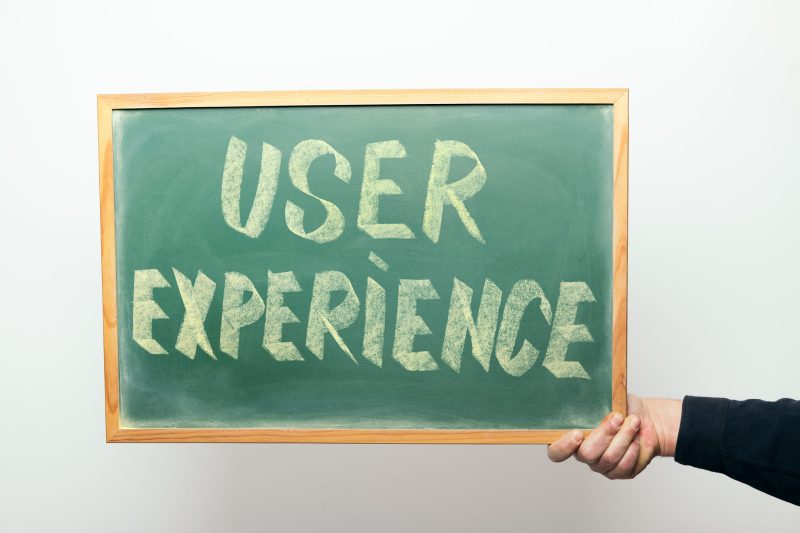
According to McKinsey research, organizations that prioritize customer experience had three times the shareholder returns as opposed to those that did not.
Since times are tough, many auto dealers are barely getting by. It hardly seems like the appropriate time to begin a company revamp. But the need to put customers first and center is actually being accelerated by the current circumstances.
The moment is now to make investments in customer experience, or CX.
Few vehicle dealers will contest the significance of changing the CX. But starting the process is a difficult task. Particularly in siloed organizations where each department faces unique problems that must be addressed separately.
Creating a smooth road involves pouring concrete over a flat surface. It will be spotty if there are bumps all over the place. However, if you want to travel anywhere, you must create the road.
Fortunately, Rome wasn’t constructed overnight. The process can be made much simpler by dividing the customer experience transformation into tiny, achievable parts.
The first step in a tried-and-true strategy for improving your customer experience and securing your competitive edge is defining a clear CX vision. Let’s examine what a customer experience vision is, why it’s important, and how to get started.
What is a vision for the customer experience?
A dealership’s impact on its consumers is described in a statement called a customer experience vision. It provides direction to the entire organization on how to conduct themselves when interacting with consumers and how to make wise judgments that are in line with the greater good. Since customers are at the heart of contemporary, customer-centric businesses, the terms “company vision” and “company purpose” may frequently be used interchangeably.
CarGurus, as an example of an auto retailer’s customer experience vision, has “a vision for helping automotive shoppers better navigate their car search.” It prioritizes improving the automobile shopping experience for customers, which is important, and is closely connected with the company’s mission of “building the world’s most trusted and transparent automotive marketplace.”
Three justifications for why car dealers need a customer experience strategy
How to make a customer experience plan more effective
When we are unsure of where we are going, it is far too simple to lose motivation. Your CX strategy is illuminated by your CX vision. It provides a firm with a clear direction, aids in goal-setting, the formulation and implementation of your strategy, and ensures that consumers are always put first in all business decisions.
catalyst for culture change to one that is customer-focused
A movement in the entire company’s attention in the direction of the customer is sparked by a customer-centric aspiration. Employees make decisions with the customer in mind, and sales teams and executives begin discussing customers rather than leads. Do you say we’re talking about customers and not leads? How can we increase our sales? Companies that prioritize delivering value to consumers over “winning a sale” are 60% more lucrative. Talking more about people and less about business has benefits. The irony, my..
integration of organizational silos
Silos are your number one pet peeve, in case you didn’t know. The way these departments work creates friction for both customers and employees and makes running the dealership much more difficult than it has to be. One method to bring these silos together and establish a sense of a unified organizational culture is through a customer experience vision. According to CustomerThink, a global community for customer-centric business strategy, departments work toward the same goal, employees feel better connected with coworkers, and consumers have a more uniform experience across the board, or a “one-company experience.”
Your vision for the client experience should include these four things.
Even though every firm will have a different vision, there are a few guiding concepts that can help you create a successful vision.
Ordinarily, a compelling vision is:
Customer- and business-focused
Yes, the needs and wants of the client form the basis of the CX vision. However, the business’s goal, values, and purpose must also be in line with the vision. A dealership with the goal of offering inexpensive vehicles to a large number of people will have a very different vision than a high-end auto store with a specialized customer base. Your vision must be unique to your business and your target market in order to be effective for you. concise and direct.
Although they may sound impressive, long-vision statements will probably fall flat. Employees may find them challenging to understand, let alone recall. Your vision statement ought to have a clear, concise message that can be expressed in one or two sentences. Although it’s generally agreed that anywhere between five and eight words is the sweet spot, utilize as many as are necessary to convey your message without the meaning being muddled. Your vision statement will be easier for employees to remember if it is concise.
accessible to all organizational levels for interpretation
Avoid using jargon, superlatives, and any subjective terms like “great,” “best,” and “superior” that could cause uncertainty. Use simple language that doesn’t need to be explained. To create something that the entire dealership can comprehend and deliver, you should consult the staff.
How to develop a vision for the automobile customer experience
Recognize what consumers value
Many businesses make the mistake of assuming that their clients care about certain things. We have said it before, and we will say it again. Before creating a customer experience plan, you must make the time and effort to deeply understand your customers.
Customer journey mapping from beginning to end is one way to get there. assemble and examine consumer information from all phases of the customer lifecycle. Get information from your CRM, and comments from staff who interact with customers, and take pleasure in some in-depth discussions with your clients. Create a map of the entire process and mark the elements that encourage loyalty, repel customers, and anything else you should be doing.
the purpose of your business.
Reminding yourself of your company’s larger ideals, mission, and vision is a smart idea. If they are no longer applicable, this can also be a chance to reexamine them. In order to create a distinctive CX vision that distinguishes you from your rivals, you must intimately comprehend the DNA of your business.
Build your vision together
After having a solid understanding of the company’s beliefs and those of its customers, consult the entire dealership to develop a shared vision. This makes it easier to get everyone in the organization on board, especially front-line employees who engage with customers directly.
ahead is a smooth road
Auto retailers must change the experience they provide to suit today’s customers since the automobile industry is on the verge of total disruption. This could entail a few touchpoint adjustments, but a complete revamp is more likely. In either case, having a clear vision that directs your entire dealership’s strategy moving forward is essential for getting you where you need to be and avoiding any roadblocks.
7 Quick Tips to Optimize Your SimpSocial Ad Campaigns

Optimization is not a concept.
It’s what performance managers do. every day, all day (well, almost).
The beauty of performance is how you can monitor your campaigns, see what works, and use that information to perform better. That, in essence, is optimization. But there’s a lot more to it.
Ad networks like SimpSocial use advanced technology behind the scenes to determine in real time where to place your ads so they will get the most exposure with the best audiences.
This is where you come in.
By learning some quick optimization guidelines, you’ll help your SimpSocial campaigns improve and get the results you are aiming for.
Here are the top 7 social media optimization tactics you should be using right now:
1. Set your campaign tracking for conversions
This is really essential to getting the most from your SimpSocial performance. By defining a conversion-based goal, you can optimize your campaign according to its true purpose. We’re not just talking about hard conversions, such as “Buy a product” or “app download”, Even for gentle conversions, this is absolutely recommended. For example, if you set “Page view” as the conversion, you can monitor users who visited your site for at least 30 seconds and optimize towards them.
2. Create an audience segment for each conversion
This custom segment will include every user who reached your landing page, even those not via your SimpSocial ads. When the audience segment gets big enough, you can establish a lookalike campaign, composed of users who are similar to, and share the same interests as, your already-converting audiences. This is a good tactic to help enhance your campaign’s conversion rate and even push it further.
3. Separate your campaigns by platform
As a general rule, mobile and tablet traffic sees higher CTRs than desktop traffic, although it does depend on the particular vertical and targeting, Due to the variances in CTRs, SimpSocial’s algorithms may prioritize mobile traffic over desktop traffic when both are included in the same campaign. For this reason, it is recommended to segregate your campaigns by platform, so you’ll have one campaign targeting desktop users, and another targeting mobile and tablet users. You can also choose to target mobile and tablet devices in separate campaigns, but make sure the available reach is large enough before you do so.
4. Start by running on the complete SimpSocial audience
When creating your first campaign, choose to run on SimpSocial’s comprehensive audience, without any specific targeting. This provides a chance for users to get to know you, and for the system to gather data on which audiences are viewing and interacting with your ads. This is really essential for the optimization of future campaigns.
5. Target one category of advanced targeting per campaign
There are several advanced targeting options on SimpSocial, including interest targeting, attribute targeting, and IAB category targeting. It is best to target just one of these advanced groups per campaign. Why? By targeting these specific audiences, you are already narrowing your reach. If you target two specialized categories in one campaign, then your reach will be even smaller. It is preferable to target just one group per campaign so you can still get seen by the widest possible audience within your chosen targeting parameter.
6. Use ad block targeting
Ad block targeting enables you to exclude users who have ad-blocking software installed. While this cuts out users who won’t see your ads, it can really narrow your potential reach in other ways. For example, if your landing page does not have ads, there is no reason to include ad block targeting. For these campaigns, make sure not to include ad block targeting.
7. Set one country/region per campaign and one product per campaign
Effective campaign targeting strikes a delicate balance. On the one hand, your reach should be high enough so your ads are seen by a large audience. On the other hand, you want to focus your targeting on the people who are most likely to be interested in your product or offer. Optimize your targeting by setting your campaign to just one region or one product. This will keep the campaign super-focused, yet with an optimal audience reach, so you’ll get better results.
Streamlining Lead Management to Increase Appointments

Auto industry pioneers can provide fresh viewpoints to help auto dealers resolve their most pressing problems.
Only about 12.5% of leads show up for showroom appointments, according to our experience. Low lead conversion rates are now a widespread problem in auto dealerships.
Adding more funds to lead generation is a typical solution. More input should result in more output, according to theory. But there’s good news. Strategies for lead acquisition by themselves are insufficient to make a difference, and they are also expensive. The way leads are managed throughout the buyer’s journey is where the true problem resides.
At each stage of the lead engagement pipeline, about 50% of leads abandon their involvement. Consider a scenario where only 50 of your 100 new leads are contacted, only 25 requests an appointment, and only 12.5% of those appointments are kept.
You don’t need to be an expert in mathematics to realize that you need to switch gears and concentrate on raising lead engagement rates. However, the burden cannot fall on the sales and BDC teams, who already find it difficult to stay on top of every lead.
Automation is useful in this situation. Dealerships may increase engagement at every level of the lead management process by automating some tasks. Let’s examine how automating the procedure is the best decision dealerships can make to draw more customers into their stores.
1. To increase contact rates, send responses that are timely and appropriate.
According to SimpSocial’s chief, “the biggest challenge for car dealers is getting in touch with potential customers so they can nurture them.” Incorrect contact information and disconnected phone lines are a couple of causes for this. However, a more important factor is that sales and BDC teams don’t react swiftly enough to new prospects, who need high-quality solutions practically immediately.
Dealerships may boost lead contact rates while relieving the burden on sales personnel thanks to automation. By automatically sending the appropriate message to the appropriate location at the appropriate time, auto-responders do tasks that people are unable to reliably and effectively complete at scale.
Good message. Incoming inquiries can be automatically responded to with pertinent responses from auto-responders that are customized for each individual lead or group of leads. Dealerships can tailor their responses depending on a number of factors, including the type of lead inquiry (new vehicle, used vehicle, upgrade) and the lead source (dealership website, third-party website, referral). To establish trust with customers and help them feel valued rather than just another number, personalization is crucial.
Right location. Dealerships must be certain that their consumer outreach uses a successful channel of communication. Even if chat, email, and the phone all have their advantages, SMS consistently produces the best results. 98% of texts are read and opened. To increase the likelihood that prospective purchasers will pick up and read the message, auto-responders can send text messages to them automatically.
ideal moment. Connecting with leads quickly is essential. According to research, the vendor who answers first receives 50% of all purchases, and firms are 100 times more likely to engage a prospect within 5 minutes than they are within 30. To ensure that dealerships consistently meet their response time goals, auto-responders can be designed to react right away to incoming messages.
What about the leads who take a little longer to respond? People are easily sidetracked and may lose concentration on the current objective, which is car shopping. If a person doesn’t reply within 24 hours after being contacted with a courteous reminder, AI bots can re-engage them. As an illustration, “Are you still interested in the car”? “Did you hear from anyone at the store?” Is this a suitable phone number to reach you at?
2. Encourage participation by starting meaningful conversations
Another significant difficulty facing vehicle dealers is nurturing leads for conversion. Currently, dealerships either don’t follow up with leads long enough to turn them into appointments, or their rivals do a better job of it. Dealerships’ emphasis on rapid wins, or customers who are prepared to buy, is one factor. In the near term, this can appear to be a successful strategy, but 50% of eligible leads aren’t ready to make a purchase. As a result, it alienates a lot of people who need nurturing over a longer period of time.
Automobile dealerships may nurture customers for as long as necessary until they take action using automated follow-up text message sequences. By communicating pertinent information at the appropriate time, bots engage in meaningful discussions with customers. By conversing both passively and actively, they can mimic human interaction. For example, they can answer questions from customers and get in touch with them to request action as necessary.
3. Make it simple to schedule appointments to increase show-up rates
The hardest part might seem to be over once a prospective buyer schedules an appointment, and you’d be forgiven for thinking that. However, as we already mentioned, 50% of leads frequently lapse before they even reach the shop floor.
The buyer must schedule the appointment in their calendar, input the pertinent information (time, date, and place), and keep their word in order for the buyer to show up. A no-show could happen if any of these things go wrong.
Dealerships can take control of scheduling thanks to automation, which can raise the set-to-show ratio to as high as 80%. Car dealerships can automate the appointment request process so that clients’ phones receive reminders and the appointment is automatically scheduled in their digital calendar. Dealerships can eliminate scheduling mistakes and increase commitment in this manner.
What about the other 20% of those who continue to fail to appear? Dealerships may re-engage no-shows thanks to automated communications tools. Dealerships can set up their software, for instance, to automatically send a message to customers who missed an appointment asking them to reschedule.
4. Bonus: Boosting lead counts through revival campaigns
Dealerships are missing a trick by simply concentrating on bringing in new customers. Companies are more likely to close a deal with an existing customer (60–70%) than with a fresh lead (5-20%). Making contact with your current clients is a wise move that can help you stay in touch while also perhaps generating new leads from people who already know and trust your business.
Dealerships not only lack the resources to reengage customers, they often misunderstand the value of doing so. Even managing fresh leads is too much for the BDC and sales teams, let alone managing revival efforts.
With automation, dealerships can program a routine to send warm text messages to long-time customers who are due for an upgrade or new model, say, six years after purchase, in order to reconnect with them. For instance, they could only wish the customer a happy birthday or inquire about how their car is working out. This puts the dealership in the customer’s mind while they are actively considering making another purchase.
Final thoughts
Automation enables dealerships to have meaningful, human-like discussions with potential customers, which can increase contact rates, the number of scheduled appointments, and appointment attendance.
Even the most skilled sales team cannot perform at the scale of automation. Although it may be perceived as a threat to the workforce, it is actually a vital instrument for contemporary commerce that enables dealerships to engage with customers quickly and relevantly. Automation actually relieves some of the pressure on BDC teams and allows them the freedom to accomplish something that no tool can: convert leads into human connections.
The most recent Facebook update is altering how car dealerships use Facebook advertising.

Facebook’s newest product for auto dealers is “On-Facebook Destination for Automotive Inventory Ads” (AIA). The inclusion of this new ad format was intended to enhance the user experience and increase the number of opportunities to generate leads on the Facebook platform. Facebook invited SimpSocial to participate in the alpha and beta testing of this new ad format in November 2019. We conducted multiple case studies with Facebook in order to provide valuable metrics and data demonstrating the efficacy of this product. With the same budget, we saw an increase in overall reach, VDP views, and leads. Here you can find out more about On-Facebook Destination for Automotive Inventory Ads (AIA) and our Facebook beta test.
Why should AIA’s destination be Facebook?
Offer a Frictionless Customer Experience: The average dealership website takes 9.3 seconds to load. Page abandonment is more likely to occur with slower display times. You can instead direct users to a Vehicle Description Page within the Facebook application. It loads in less than one second, and the user can submit a lead through Facebook Messenger in real-time.
Cost-per-lead and cost-per-content view were reduced by 82% and 17%, respectively, when users were directed to an on-Facebook destination experience as opposed to a website destination experience.
Reach in-market shoppers during their purchasing journey: There are over 20 million monthly searches for used vehicles on the Facebook marketplace in the United States. With On-Facebook Destination, you will have access to premium ad spaces at the top of the Marketplace vehicle feed and on consumer vehicle listings.
How do I get started?
- Curious about how to get started? Follow our simple instructions below to begin using On-Facebook Destination for AIA immediately:
- Contact Experts in Social Media on the Website
- Ensure that your dealership has the appropriate inventory mix.
- Verify that a messaging provider or someone at the dealership is responding to Messenger messages.
- We will verify that the leads are reaching your CRM.
Utilize Facebook Destination for AIA marketing campaigns!
SimpSocial pioneered this product and assisted the Facebook team in creating AIA’s On-Facebook Destination. We are able to manage this new ad format and ensure that your leads are managed appropriately. Our social media specialists are pleased to offer this new Facebook product to our customers. Contact us to find out how to get started!
Do you lack LeadsCon?
 If you are involved in marketing or provide telecom support to marketing, you are aware that voice and messaging are essential components of lead generation and the consumer experience as a whole. Consequently, lead generation best practices are evolving at the same rate as the telecom industry and its rules and regulations. How can one keep up?
LeadsCon is the premier event for remaining current on lead generation, nurturing, and conversion. However, if you are like the majority of us, there is neither time nor money to attend. This year, SimpSocial has a team attending, and in this month’s industry briefing, we’ll take you along for the voyage!
Join SimpSocial Marketing Director and webinar presenter SimpSocial as he discusses the following topics with industry experts, strategists, customers, and exhibitors from 25 different verticals:
-Building an impenetrable, completely compliant opt-in messaging list of individuals who want to hear from you!
How selecting the optimal voice service provider can maximize the return on your investment in speaking
-What prospects anticipate from a well-executed text message (hint: the principles can actually assist you!)
What is your approach to numbers? Whether you’re calling or texting, the number(s) you use say something about you.
-The benefits of a SimpSocial lead generation strategy
-Tips for ensuring that your messaging campaigns are authorized and implemented
Do not delay! Register now to hear all of LeadsCon’s best practices without leaving your workstation.
If you are involved in marketing or provide telecom support to marketing, you are aware that voice and messaging are essential components of lead generation and the consumer experience as a whole. Consequently, lead generation best practices are evolving at the same rate as the telecom industry and its rules and regulations. How can one keep up?
LeadsCon is the premier event for remaining current on lead generation, nurturing, and conversion. However, if you are like the majority of us, there is neither time nor money to attend. This year, SimpSocial has a team attending, and in this month’s industry briefing, we’ll take you along for the voyage!
Join SimpSocial Marketing Director and webinar presenter SimpSocial as he discusses the following topics with industry experts, strategists, customers, and exhibitors from 25 different verticals:
-Building an impenetrable, completely compliant opt-in messaging list of individuals who want to hear from you!
How selecting the optimal voice service provider can maximize the return on your investment in speaking
-What prospects anticipate from a well-executed text message (hint: the principles can actually assist you!)
What is your approach to numbers? Whether you’re calling or texting, the number(s) you use say something about you.
-The benefits of a SimpSocial lead generation strategy
-Tips for ensuring that your messaging campaigns are authorized and implemented
Do not delay! Register now to hear all of LeadsCon’s best practices without leaving your workstation. How TikTok Can Enhance Your Online Presence
 TikTok is replacing Facebook, Instagram, and Snapchat as the preferred platform for businesses to advertise their products and services. With over 3 billion downloads and 1 billion monthly active users, TikTok has rapidly become one of the leading video-sharing social platforms. The app’s algorithm evolves with the user, and the machine learning system tracks what they view and interact with to create the ideal user experience: the more TikTok is used, the better the experience.
How does TikTok advertise?
TikTok advertisements are everything that networks television commercials aspire to be: concise, pertinent, non-disruptive, and engaging. The development of the app can be partially attributed to its user-friendly, native advertising format, with ads seamlessly blending with organic content on the “For You” feed. The greatest benefit of TikTok advertising and marketing is that it raises brand awareness, increasing your brand’s visibility and credibility while facilitating user engagement.
How will TikTok benefit my company?
1. First-Mover Advantage
Businesses with early adoption of TikTok have a competitive advantage over their peers. Possibilities for cultivating profound customer engagement and unrivaled brand awareness are limitless due to the lack of precedent and abundance of creative options.
2. Mobile-First Infrastructure
Businesses are shifting to a mobile-first marketing mentality, and TikTok is an excellent method to reach more than 2.7 billion unique mobile users worldwide. TikTok was designed with the mobile experience in mind, providing it an advantage over the billions of mobile devices that are used daily. Native ad placements generate engagements and target in-market users, thereby boosting conversion rates.
3. Low Effort, High Payoff
There is a very low barrier to entry for launching a TikTok advertising campaign, which translates to highly effective campaigns with minimal effort. To create quality content, all you need is a smartphone. You can concentrate on locating consumers who are relevant to your niche and posting content that aligns with your brand’s image with minimal investment.
Increasing Age Groups
As the TikTok platform has become more ubiquitous, its user base across all generations has grown significantly. By 2022, 72% of all TikTok users will be between the ages of 19 and 39. Utilizing TikTok to target the younger demographic that is interested in your products can be advantageous to your business and increase your overall number of leads.
5. Increased Organic Reach
TikTok is distinguished from other platforms by its greater organic reach and overall user engagement. This is due to the algorithm’s emphasis on hyper-curating the feed based on each user’s specific interests. It also relates to the average amount of time spent on the site and the daily quantity of content consumed on the app. Users in the United States spend an average of 68 minutes per day on the application. The watch ability and shareability of TikTok content also increase website traffic, making it an ideal platform for expanding your audience and generating consistent leads.
6. Viral Possibility
By participating in popular trends, employees of your business can utilize the platform to increase the likelihood of creating viral content. TikTok enables you to exhibit your business’s personality and brand through viral challenges, customer testimonials, and product highlights.
Using TikTok for Business Promotion
TikTok has limitless, unrealized potential and opens the door to additional video opportunities for your business and industry as a whole. The game of short-term, consumable content has just advanced. Are you all set?
Click Here Digital has experience with TikTok advertising. We are pleased to be the pioneers in this industry and are actively collaborating with TikTok representatives to remain abreast of the latest developments. Contact us to start promoting TikTok advertisements for your business!
TikTok is replacing Facebook, Instagram, and Snapchat as the preferred platform for businesses to advertise their products and services. With over 3 billion downloads and 1 billion monthly active users, TikTok has rapidly become one of the leading video-sharing social platforms. The app’s algorithm evolves with the user, and the machine learning system tracks what they view and interact with to create the ideal user experience: the more TikTok is used, the better the experience.
How does TikTok advertise?
TikTok advertisements are everything that networks television commercials aspire to be: concise, pertinent, non-disruptive, and engaging. The development of the app can be partially attributed to its user-friendly, native advertising format, with ads seamlessly blending with organic content on the “For You” feed. The greatest benefit of TikTok advertising and marketing is that it raises brand awareness, increasing your brand’s visibility and credibility while facilitating user engagement.
How will TikTok benefit my company?
1. First-Mover Advantage
Businesses with early adoption of TikTok have a competitive advantage over their peers. Possibilities for cultivating profound customer engagement and unrivaled brand awareness are limitless due to the lack of precedent and abundance of creative options.
2. Mobile-First Infrastructure
Businesses are shifting to a mobile-first marketing mentality, and TikTok is an excellent method to reach more than 2.7 billion unique mobile users worldwide. TikTok was designed with the mobile experience in mind, providing it an advantage over the billions of mobile devices that are used daily. Native ad placements generate engagements and target in-market users, thereby boosting conversion rates.
3. Low Effort, High Payoff
There is a very low barrier to entry for launching a TikTok advertising campaign, which translates to highly effective campaigns with minimal effort. To create quality content, all you need is a smartphone. You can concentrate on locating consumers who are relevant to your niche and posting content that aligns with your brand’s image with minimal investment.
Increasing Age Groups
As the TikTok platform has become more ubiquitous, its user base across all generations has grown significantly. By 2022, 72% of all TikTok users will be between the ages of 19 and 39. Utilizing TikTok to target the younger demographic that is interested in your products can be advantageous to your business and increase your overall number of leads.
5. Increased Organic Reach
TikTok is distinguished from other platforms by its greater organic reach and overall user engagement. This is due to the algorithm’s emphasis on hyper-curating the feed based on each user’s specific interests. It also relates to the average amount of time spent on the site and the daily quantity of content consumed on the app. Users in the United States spend an average of 68 minutes per day on the application. The watch ability and shareability of TikTok content also increase website traffic, making it an ideal platform for expanding your audience and generating consistent leads.
6. Viral Possibility
By participating in popular trends, employees of your business can utilize the platform to increase the likelihood of creating viral content. TikTok enables you to exhibit your business’s personality and brand through viral challenges, customer testimonials, and product highlights.
Using TikTok for Business Promotion
TikTok has limitless, unrealized potential and opens the door to additional video opportunities for your business and industry as a whole. The game of short-term, consumable content has just advanced. Are you all set?
Click Here Digital has experience with TikTok advertising. We are pleased to be the pioneers in this industry and are actively collaborating with TikTok representatives to remain abreast of the latest developments. Contact us to start promoting TikTok advertisements for your business!
The Top Ten Telecom News and Trends
 With new rules, fees, products, and trends, the omnichannel world of cloud voice and messaging is busier than ever. It’s sometimes simple to forget why we’re doing what we’re doing!
Therefore, this month’s industry briefing is a summary of the newest and finest information to keep you informed. SimpSocial, a webinar facilitator and SimpSocial veteran, discusses:
With new rules, fees, products, and trends, the omnichannel world of cloud voice and messaging is busier than ever. It’s sometimes simple to forget why we’re doing what we’re doing!
Therefore, this month’s industry briefing is a summary of the newest and finest information to keep you informed. SimpSocial, a webinar facilitator and SimpSocial veteran, discusses:
- How UCaaS renders the desk phone obsolete (and makes it superior)
- Important voice and messaging compliance dates are imminent
- In addition, toll-free redundancy ensures that your calls are conveyed.
- Text messaging is (still) the simplest method to effectively engage people.
- Enable SMS on all of your numbers, particularly your toll-free ones.
- Deactivate inactive message campaigns (or pay a fee).
- Call cost vs. quality…
- E911 is not either/or; there’s a better method
- Three items to consider when selecting a voice and messaging provider
Which sending method do you employ for your messaging campaigns, if any?

A year ago, many businesses similar to yours were obsessed with using standard phone numbers with local area codes that prompted customers to activate them immediately. With all of the new carrier requirements surrounding brand and campaign registration, as well as fees, restrictions, penalties, and likely hassles, you may feel frightened. You would have company.
Long code messaging, or 10DLC, is ideal for certain applications. But you must remain abreast of the most recent changes that are increasing complexity and the likelihood of incurring a penalty. If you’re like most companies, you’re a little hesitant.
At SimpSocial, we’re ecstatic about the growth of short code messaging, which offers distinct benefits such as fast, unfiltered throughput to even the largest lists. Once a number is established, you can reach a large number of people almost immediately. Additionally, we are processing more toll-free campaigns, which is excellent for brand promotion. Our messaging experts have a comprehensive understanding of the advantages and disadvantages of each messaging type, as well as the ideal use cases for each.
Moreover, we understand how to position your short code application for the quickest approval and how to optimize long code brand and campaign registrations. We can evaluate your use case and ensure that your messaging satisfies the requirements, along with rate information so that you can make an informed decision based on the current state of affairs.
If you need more assistance, you can port your numbers to another provider, or you can use our award-winning messaging API to integrate SimpSocial into your existing platform; your options are limitless.
If messaging is causing you headaches, please contact me for a free consultation with no obligation.
Reputation management: What is it?
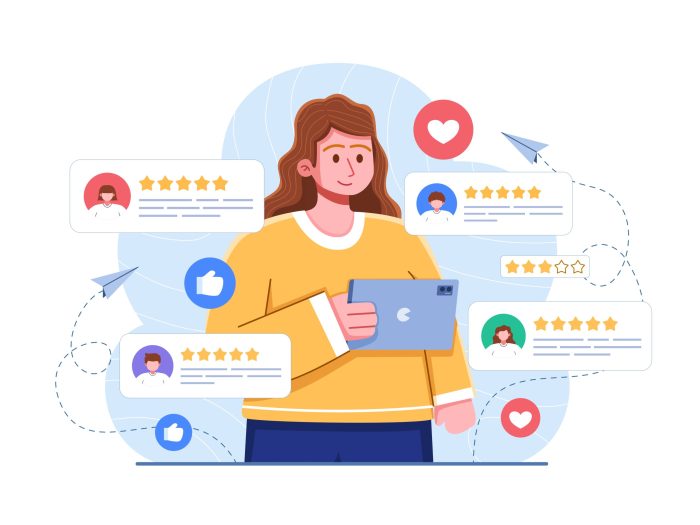 You may have heard a number of stories about how bad reviews caused another company to fail. You might be wondering what your company can do to deal with bad reviews and get good ones. An outline of reputation management for companies like auto dealers is provided here.
What exactly is reputation management, then?
Nowadays, when most customers conduct their research for potential purchases online, maintaining a positive internet reputation is more crucial than ever. Reviews, whether they are brief, highlighted comments, or in-depth feedback, are frequently used for this. There are other ways your internet reputation might be discovered, but if your main activity is offering or selling goods or services, reviews may be the most significant indicator of your online reputation.
The process of influencing and reshaping public views of your company is known as reputation management. One method to achieve this is through effective marketing, which you can learn how to do by conducting a thorough internet search. But it’s also crucial to interact with folks who have opinions about your company, and that’s what we’re mostly discussing today.
Your reputation management strategy.
Reputation management is based on the premise that you can only influence what people see of your company, not what they think. The finest practices in this area concentrate on making sure that customers choose your company based on what they see online.
The greatest strategy to manage your reputation is to conduct yourself in a trustworthy, professional, and ethical manner at all times. If people discover that you done something obviously wrong, no amount of damage control will be able to keep your company from failing. You may be confident that people will notice that other people notice if you are conducting business properly from the start. That garners greater interest and, ideally, more clients.
However, managing your reputation truly means dealing with issues that have the potential to damage it. When someone provides negative feedback, we can interact with them to address their issues. When we interact with them, it should be in line with how we would like to be handled if we provided similar comments about another company. It ought to be respectful and professional. Most importantly, it should be truthful and honest. If we made a mistake, we ought to own up to it, provide an apology, and seek advice on how to fix it. In the end, most people might want us to figure out how we can do business better, with the exception of a few spiteful commenters.
In addition, effective reputation management entails motivating others to compliment us. If we aren’t adept at encouraging others to submit reviews on review websites or on our social media profiles, it will be challenging to do this. Businesses can do this with the aid of various tools. You can identify people who you would find valuable by conducting a thorough online search.
Will effective reputation management benefit your company?
Yes, to answer briefly. In reality, the way you conduct business and how others perceive it will increase interest in your company. People will view you as a dependable collaborator in helping them make knowledgeable judgments regarding utilizing a good or service. People will be glad to cooperate with you and spread the word once they have done this. Your company will expand as a result, and your internet reputation will remain favorable. Above all, reputation management is necessary to ensure that your company succeeds in the cutthroat internet marketplace.
This has been an introduction to reputation management, including what it is, how to use it, and whether it benefits your company. We wish you the best of luck in establishing your company as one that cares about its clients!
You may have heard a number of stories about how bad reviews caused another company to fail. You might be wondering what your company can do to deal with bad reviews and get good ones. An outline of reputation management for companies like auto dealers is provided here.
What exactly is reputation management, then?
Nowadays, when most customers conduct their research for potential purchases online, maintaining a positive internet reputation is more crucial than ever. Reviews, whether they are brief, highlighted comments, or in-depth feedback, are frequently used for this. There are other ways your internet reputation might be discovered, but if your main activity is offering or selling goods or services, reviews may be the most significant indicator of your online reputation.
The process of influencing and reshaping public views of your company is known as reputation management. One method to achieve this is through effective marketing, which you can learn how to do by conducting a thorough internet search. But it’s also crucial to interact with folks who have opinions about your company, and that’s what we’re mostly discussing today.
Your reputation management strategy.
Reputation management is based on the premise that you can only influence what people see of your company, not what they think. The finest practices in this area concentrate on making sure that customers choose your company based on what they see online.
The greatest strategy to manage your reputation is to conduct yourself in a trustworthy, professional, and ethical manner at all times. If people discover that you done something obviously wrong, no amount of damage control will be able to keep your company from failing. You may be confident that people will notice that other people notice if you are conducting business properly from the start. That garners greater interest and, ideally, more clients.
However, managing your reputation truly means dealing with issues that have the potential to damage it. When someone provides negative feedback, we can interact with them to address their issues. When we interact with them, it should be in line with how we would like to be handled if we provided similar comments about another company. It ought to be respectful and professional. Most importantly, it should be truthful and honest. If we made a mistake, we ought to own up to it, provide an apology, and seek advice on how to fix it. In the end, most people might want us to figure out how we can do business better, with the exception of a few spiteful commenters.
In addition, effective reputation management entails motivating others to compliment us. If we aren’t adept at encouraging others to submit reviews on review websites or on our social media profiles, it will be challenging to do this. Businesses can do this with the aid of various tools. You can identify people who you would find valuable by conducting a thorough online search.
Will effective reputation management benefit your company?
Yes, to answer briefly. In reality, the way you conduct business and how others perceive it will increase interest in your company. People will view you as a dependable collaborator in helping them make knowledgeable judgments regarding utilizing a good or service. People will be glad to cooperate with you and spread the word once they have done this. Your company will expand as a result, and your internet reputation will remain favorable. Above all, reputation management is necessary to ensure that your company succeeds in the cutthroat internet marketplace.
This has been an introduction to reputation management, including what it is, how to use it, and whether it benefits your company. We wish you the best of luck in establishing your company as one that cares about its clients! Online Reputation Matters More Than Ever
 Today, you probably examine online reviews before visiting a restaurant, motel, or service department. In this digital age, removing the veil on what corporations, products, and services want us to believe about their business versus what consumers have really experienced with their organization is instinctive. Today, they want the good, bad, and ugly upfront so they can make an informed choice.
Every dealer should understand how FTC’s new review collection and display standards will affect their business. Why? Our study shows that 93% of car purchasers utilize customer reviews to choosing a dealership. 93%!! It couldn’t be clearer that you need to tighten up your review and reputation management plan before you lose clients you didn’t even know you had.
Check your Google Business Profile, get online reviews flowing, audit review websites, and set up a powerful CX plan to use customer reviews to grow your business.
What’s new?
Starting April 26, 2022, FTC guidelines require both positive and negative reviews to be published instantly without a holding period.
DealerRater, an industry partner, said its Community Guidelines will filter reviews that don’t fit their standards, but all reviews will be shown promptly. DealerRater often holds bad ratings for 14 days before publishing, giving dealers time to manage.
Why do you care?
Every minute a negative review remains online without a company response could cost the organization new business. 8% of buyers didn’t contact a dealership due to unfavorable reviews and/or treatment.
SimpSocial dealer partners must monitor and respond immediately.
Dealers can: continuously check the dealership’s reputation on many major sites
rapidly connecting to consumers boosts the reputation
promote good ratings and effectively reply to negative ones or help settle disagreements, producing even more reviews because most consumers give positive reviews (81% for purchases, 88% for service) when prompted.
We added a couple of extra tools for quick awareness and response since reviews are time-sensitive:
SimpSocial automatically gathers reviews, removing the need to log in and check for pending publishing reviews.
DealerRater’s “resolved” button will alert consumers to amend their reviews.
Online reputation management is crucial. Due to a vehicle inventory shortage, increasing interest rates, online national retailers moving into local stores, and staffing shortages, consumers are constantly searching online for vehicles that meet their needs, budget, and timeline. Dealers must avoid losing sales due to unfavorable reviews or unsatisfactory responses.
SimpSocial will help your store stand out from internet sellers and local dealers alike.
Today, you probably examine online reviews before visiting a restaurant, motel, or service department. In this digital age, removing the veil on what corporations, products, and services want us to believe about their business versus what consumers have really experienced with their organization is instinctive. Today, they want the good, bad, and ugly upfront so they can make an informed choice.
Every dealer should understand how FTC’s new review collection and display standards will affect their business. Why? Our study shows that 93% of car purchasers utilize customer reviews to choosing a dealership. 93%!! It couldn’t be clearer that you need to tighten up your review and reputation management plan before you lose clients you didn’t even know you had.
Check your Google Business Profile, get online reviews flowing, audit review websites, and set up a powerful CX plan to use customer reviews to grow your business.
What’s new?
Starting April 26, 2022, FTC guidelines require both positive and negative reviews to be published instantly without a holding period.
DealerRater, an industry partner, said its Community Guidelines will filter reviews that don’t fit their standards, but all reviews will be shown promptly. DealerRater often holds bad ratings for 14 days before publishing, giving dealers time to manage.
Why do you care?
Every minute a negative review remains online without a company response could cost the organization new business. 8% of buyers didn’t contact a dealership due to unfavorable reviews and/or treatment.
SimpSocial dealer partners must monitor and respond immediately.
Dealers can: continuously check the dealership’s reputation on many major sites
rapidly connecting to consumers boosts the reputation
promote good ratings and effectively reply to negative ones or help settle disagreements, producing even more reviews because most consumers give positive reviews (81% for purchases, 88% for service) when prompted.
We added a couple of extra tools for quick awareness and response since reviews are time-sensitive:
SimpSocial automatically gathers reviews, removing the need to log in and check for pending publishing reviews.
DealerRater’s “resolved” button will alert consumers to amend their reviews.
Online reputation management is crucial. Due to a vehicle inventory shortage, increasing interest rates, online national retailers moving into local stores, and staffing shortages, consumers are constantly searching online for vehicles that meet their needs, budget, and timeline. Dealers must avoid losing sales due to unfavorable reviews or unsatisfactory responses.
SimpSocial will help your store stand out from internet sellers and local dealers alike. Automotive Marketing Strategies to Attract New Customers That Every Dealer Should Know
 Automotive marketing solutions help you obtain more leads, close more deals, and keep customers. Utilizing technology to improve the customer experience will enable your business to acquire, convert, and retain more customers.
From automotive reputation management strategies to displaying inventory to active car consumers, technology can aid in customer acquisition. Once you reach new consumers, you convert them into car buyers with the ultimate aim of acquiring customers for life who continue to return to your dealership.
To acquire new consumers, it is essential to use the most effective automotive marketing strategies to spread the word about your dealership. Increasing brand awareness and attracting new consumers by generating a higher return on investment from your marketing budget.
Targeting the appropriate audience with the appropriate message will improve your dealership’s lead generation. Amazon streaming advertisements are a new method to reach a refined audience. Now is the time to advertise to capitalize on the rapid growth of consumers “cutting the cord,” or ditching cable in favor of streaming services. According to eMarketer, the number of cord-cutters is expected to reach 55.1 million this year, up from 39.3 million in 2019. More consumers than ever are streaming video content. On over 100 channels, including Amazon Prime Video, Hulu, and AMC, Amazon streaming ads reach this growing, targeted audience.
Bettenhausen Chrysler Dodge Jeep Ram desired to reach consumers in the Chicago area who were interested in purchasing and trading in automobiles. The dealership utilized SimpSocial Amazon streaming ads to reach viewers who stream their preferred movies, television programs, and live sports. The ads cannot be ignored, resulting in a completion rate that is unprecedented in comparison to traditional television.
Bettenhausen CDJR utilized the creative team at SimpSocial to design a streaming ad campaign promoting the dealer’s Kelley Blue Book vehicle appraisals and immediate cash offers for vehicles. Since the ads are highly targeted using Amazon’s first-party data, the dealership is able to collect more conversion data. This insightful data consists of browsing and purchasing patterns.
The general manager of Bettenhausen CDJR stated, “We see strong results from the streaming ads because only those who are interested view them.” “It’s highly quantifiable.SimpSocial keeps our dealership in mind and informs us of any new developments. We can be ahead of the curve, allowing us to bring new technologies and programs to market more quickly.”
Online advertising on Facebook, Twitter, YouTube, LinkedIn, and dozens of other websites is an additional automotive marketing strategy for capturing new leads, promoting services, and selling products.
During one holiday weekend, McKenney Chevrolet Buick GMC Cadillac in Lowell, North Carolina, sold seven Buick Encores through social advertising. SimpSocial designed advertisements for the Encores that the dealership desired to sell. Additionally, the dealership implemented a targeted, low-cost Facebook advertising campaign. Following 100 post engagements and 135 views on the Facebook advertisement, the dealer sold all seven automobiles that weekend.
“SimpSocial work with Facebook and Twitter has been nothing short of outstanding,” said the general manager of McKenney. “They have taught me a great deal about social media and helped me sell some vehicles, which is the ultimate goal.”
Using your Google Business Profile to highlight your inventory to active car buyers is another effective automotive marketing strategy. People browsing for your dealership will be able to view your inventory’s vehicle availability, pricing, and other crucial details directly on Google.
Social media marketing is an additional technique for attracting consumers. Customized, captivating content highlights what makes your business special. In addition, it is important to highlight special offers, promotions, positive customer reviews, and community activities.
Positive customer feedback is essential for automotive reputation management strategies. Online evaluations are the new word-of-mouth marketing and recommendations for managing your online reputation. It is essential to survey satisfied consumers while they are at your dealership in order to increase positive feedback.
Near Chicago, Illinois, Muller Honda of Gurnee employs SimpSocial survey and review technology to obtain customer feedback and more positive reviews via email and text message links. Having customers submit a review prior to exiting your establishment ensures that they will not forget later. Responding to every review with a personalized response, whether positive or negative, is another excellent way to demonstrate that your dealership is proactive and cares about every consumer. Dealers can respond themselves or collaborate with a vendor such as SimpSocial to do so on their behalf.
SimpSocial sent over 2,600 consumer surveys to Muller Honda of Gurnee between February and April. The dealership now has a 95% referral rating and a 5-star Edmunds rating.
The marketing director for Muller Honda stated, “My favorite aspect of SimpSocial is the element of trust.” “I appreciate the positive outreach and quick procedure. Additionally, I appreciate that each review response is distinct and not pre-written.”
Using text messaging to attract customers is another effective method. The majority of texts are read within three minutes, so sending text notifications to customers is a fast process. Text messages can be sent by dealers to inform customers of a major sale, oil change special, or lease expiration.
Using consumer text marketing, car dealerships in Parkersburg, West Virginia, such as McClinton Chevrolet, can reach car owners interested in trading in their vehicles. After sending text messages alerting consumers about a trade-up buyback campaign, McClinton received more than 30 trade-in requests and scheduled more than ten appointments within the first week.
“It is always gratifying to observe the needle moving in the correct direction. “It’s good for us when we spend money and immediately see interactions and customers filling out forms,” said the dealer principal at McClinton. I knew a text message would be the most effective method to reach people.
SimpSocial can assist your dealership in attracting new clients. SimpSocial enables you to surpass your vehicle sales goals while providing a superior purchasing experience for your customers.
Automotive marketing solutions help you obtain more leads, close more deals, and keep customers. Utilizing technology to improve the customer experience will enable your business to acquire, convert, and retain more customers.
From automotive reputation management strategies to displaying inventory to active car consumers, technology can aid in customer acquisition. Once you reach new consumers, you convert them into car buyers with the ultimate aim of acquiring customers for life who continue to return to your dealership.
To acquire new consumers, it is essential to use the most effective automotive marketing strategies to spread the word about your dealership. Increasing brand awareness and attracting new consumers by generating a higher return on investment from your marketing budget.
Targeting the appropriate audience with the appropriate message will improve your dealership’s lead generation. Amazon streaming advertisements are a new method to reach a refined audience. Now is the time to advertise to capitalize on the rapid growth of consumers “cutting the cord,” or ditching cable in favor of streaming services. According to eMarketer, the number of cord-cutters is expected to reach 55.1 million this year, up from 39.3 million in 2019. More consumers than ever are streaming video content. On over 100 channels, including Amazon Prime Video, Hulu, and AMC, Amazon streaming ads reach this growing, targeted audience.
Bettenhausen Chrysler Dodge Jeep Ram desired to reach consumers in the Chicago area who were interested in purchasing and trading in automobiles. The dealership utilized SimpSocial Amazon streaming ads to reach viewers who stream their preferred movies, television programs, and live sports. The ads cannot be ignored, resulting in a completion rate that is unprecedented in comparison to traditional television.
Bettenhausen CDJR utilized the creative team at SimpSocial to design a streaming ad campaign promoting the dealer’s Kelley Blue Book vehicle appraisals and immediate cash offers for vehicles. Since the ads are highly targeted using Amazon’s first-party data, the dealership is able to collect more conversion data. This insightful data consists of browsing and purchasing patterns.
The general manager of Bettenhausen CDJR stated, “We see strong results from the streaming ads because only those who are interested view them.” “It’s highly quantifiable.SimpSocial keeps our dealership in mind and informs us of any new developments. We can be ahead of the curve, allowing us to bring new technologies and programs to market more quickly.”
Online advertising on Facebook, Twitter, YouTube, LinkedIn, and dozens of other websites is an additional automotive marketing strategy for capturing new leads, promoting services, and selling products.
During one holiday weekend, McKenney Chevrolet Buick GMC Cadillac in Lowell, North Carolina, sold seven Buick Encores through social advertising. SimpSocial designed advertisements for the Encores that the dealership desired to sell. Additionally, the dealership implemented a targeted, low-cost Facebook advertising campaign. Following 100 post engagements and 135 views on the Facebook advertisement, the dealer sold all seven automobiles that weekend.
“SimpSocial work with Facebook and Twitter has been nothing short of outstanding,” said the general manager of McKenney. “They have taught me a great deal about social media and helped me sell some vehicles, which is the ultimate goal.”
Using your Google Business Profile to highlight your inventory to active car buyers is another effective automotive marketing strategy. People browsing for your dealership will be able to view your inventory’s vehicle availability, pricing, and other crucial details directly on Google.
Social media marketing is an additional technique for attracting consumers. Customized, captivating content highlights what makes your business special. In addition, it is important to highlight special offers, promotions, positive customer reviews, and community activities.
Positive customer feedback is essential for automotive reputation management strategies. Online evaluations are the new word-of-mouth marketing and recommendations for managing your online reputation. It is essential to survey satisfied consumers while they are at your dealership in order to increase positive feedback.
Near Chicago, Illinois, Muller Honda of Gurnee employs SimpSocial survey and review technology to obtain customer feedback and more positive reviews via email and text message links. Having customers submit a review prior to exiting your establishment ensures that they will not forget later. Responding to every review with a personalized response, whether positive or negative, is another excellent way to demonstrate that your dealership is proactive and cares about every consumer. Dealers can respond themselves or collaborate with a vendor such as SimpSocial to do so on their behalf.
SimpSocial sent over 2,600 consumer surveys to Muller Honda of Gurnee between February and April. The dealership now has a 95% referral rating and a 5-star Edmunds rating.
The marketing director for Muller Honda stated, “My favorite aspect of SimpSocial is the element of trust.” “I appreciate the positive outreach and quick procedure. Additionally, I appreciate that each review response is distinct and not pre-written.”
Using text messaging to attract customers is another effective method. The majority of texts are read within three minutes, so sending text notifications to customers is a fast process. Text messages can be sent by dealers to inform customers of a major sale, oil change special, or lease expiration.
Using consumer text marketing, car dealerships in Parkersburg, West Virginia, such as McClinton Chevrolet, can reach car owners interested in trading in their vehicles. After sending text messages alerting consumers about a trade-up buyback campaign, McClinton received more than 30 trade-in requests and scheduled more than ten appointments within the first week.
“It is always gratifying to observe the needle moving in the correct direction. “It’s good for us when we spend money and immediately see interactions and customers filling out forms,” said the dealer principal at McClinton. I knew a text message would be the most effective method to reach people.
SimpSocial can assist your dealership in attracting new clients. SimpSocial enables you to surpass your vehicle sales goals while providing a superior purchasing experience for your customers.
How Dealers Can Turn Auto Shoppers into Buyers
 After attracting new customers to your dealership, you need automotive digital marketing tools to convert them into purchasers.
To satisfy customers, dealers must increase customer service and communication. Implementing the right technology will improve the customer experience and help your organization grow.
Online engagement will help your dealership sell. Technology can help with pandemic-exacerbated labor shortages.
Dynamic 24/7 lead response, AI chat, personalized videos, top inventory merchandising sites, and online credit prequalification are essential automobile digital marketing methods.
AI lead response software generates customized quotations.
Customers like ongoing communication and rapid responses. It’s the best method to keep customers coming back. AI handles these responses and follows up on leads promptly and routinely.
The SimpSocial Response Logix solution boosts your dealership’s visibility and customer experience to sell more cars.
Kia of Alhambra sought a simple way to reply to leads online and follow up with prospective car purchasers. Response Logix from SimpSocial helped the California auto dealership close more internet leads and never miss a lead during employee changes.
Kia of Alhambra’s general manager claimed Response Logix helps quote all internet leads and improves follow-up. “Many reactivated leads!”
Response Logix automatically replies to leads within 10 minutes 24/7, making it essential to automobile digital marketing. Due to inventory shortages, the technology emails a quote with numerous new and used vehicle selections and the vehicle car customers inquired about.
AI-powered chatbots convert more leads.
Your website, Facebook page, and text message AI chat helpers offer the finest first impression by answering numerous initial queries. Your dealership needs AI to answer qualifying questions, make appointments, and direct conversations to the right team member when human support is needed.
Brown’s Fairfax Nissan wanted to boost lead volume and conversion rates through messaging.SimpSocial Response Path helps the Virginia car dealership engage customers 24/7 and increase leads from their website and Facebook page.
Brown’s Fairfax Nissan’s general manager said Response Path improves customer service and leads capture and conversion. “Response Path is helping us book appointments with car buyers and service customers, and our closing ratio is 31%.”
Response Path enhances your automotive digital marketing solutions by engaging customers and converting more leads 24/7. AI optimizes your dealership.
Video-engage customers
Easy-to-use video lead engagement technology records sends and monitors videos so your dealership can communicate with customers and display your brand in the most favored medium.
Online research and communication have increased consumer video viewing. Learning the best video methods to sell and service more is crucial.
70% of people prefer watching a brief video to learn about a new product or service, and 78% watch web videos weekly. Record product characteristics, safety measures, and special offers with your tech-savvy personnel or a trusted partner like SimpSocial.Custom videos are great for email and text marketing in automobile digital marketing.
Muller Honda of Gurnee wanted to easily record a sales event video. Video Logix and Response Path Power Text texted over 20,000 customers the video link. One video link sold five automobiles at the Chicago dealership. Text drove thousands of video views.
“It was simple. Easy setup. The Muller Honda of Gurnee marketing manager claimed everything was easy.
Boost inventory management
Automotive digital marketing should include inventory merchandising. Posting your automobiles on YouTube, Facebook, BestRide, and Google will attract targeted buyers and improve customer engagement.
Despite inventory pricing and sourcing issues, you must efficiently package your autos to new car buyers. These top sites will help your auto dealership surpass sales targets and improve customer service.
SimpSocial optimizes SEO on YouTube’s second-largest search engine by creating VIN-specific videos for each vehicle in your inventory. Your digital marketing solutions need high-quality films since 75% of auto consumers claim internet video influences their shopping behavior.
Facebook Marketplace updated recently. SimpSocial may promote your new and used automobile inventory on Facebook. 73% of automobile buyers use Facebook the most. Real-time virtual showrooms display vehicle inventory on your business page.
Dealers can also advertise their vehicles on BestRide.com through SimpSocial. Eighty-six percent of auto purchasers use BestRide.com’s interactive business-to-consumer marketplace and buy a car within two weeks.
Google Business Profiles should include live vehicle inventory. Your Google profile should have updated discounts, hours, and vehicle inventory as 8 out of 10 consumers don’t visit on your website. SimpSocial automatically posts your dealership’s live vehicle inventory, saving your staff time and effort.
Simplify buying.
Prequalify car purchasers online so they know what they can buy.SimpSocial Credit Logix eliminates guessing and speeds up the buying process for all consumers, including those with bad credit.
Royal Automotive Group converted 60% with Credit Logix. Arizona dealer’s car digital marketing solutions depend on credit tool. Why bother selling an unaffordable car?
Royal Automotive’s marketing manager remarked, “Our deals fund faster with our approval time down to 18-23 minutes. “Our average subprime buyer conversion increased from 30% to 60%. Our sales doubled.”
SimpSocial sales enablement team and solutions can help manage all these tools and strategies. Today’s market makes hiring and managing leads difficult, but the appropriate technology and people can convert dealers’ sales and service prospects.
McClinton Chevy Mitsubishi boosts sales, cuts costs, and solves personnel issues with SimpSocial Sales Boost. Sales Boost handles inbound internet leads, outbound calls, and sales and service appointment scheduling for the West Virginia dealership.
“We’re selling more cars and exceeding our sales goals with SimpSocial,” said McClinton Chevrolet Mitsubishi’s major owner. “Their technology and team handle all our inbound leads, delivering great results daily.”
After attracting new customers to your dealership, you need automotive digital marketing tools to convert them into purchasers.
To satisfy customers, dealers must increase customer service and communication. Implementing the right technology will improve the customer experience and help your organization grow.
Online engagement will help your dealership sell. Technology can help with pandemic-exacerbated labor shortages.
Dynamic 24/7 lead response, AI chat, personalized videos, top inventory merchandising sites, and online credit prequalification are essential automobile digital marketing methods.
AI lead response software generates customized quotations.
Customers like ongoing communication and rapid responses. It’s the best method to keep customers coming back. AI handles these responses and follows up on leads promptly and routinely.
The SimpSocial Response Logix solution boosts your dealership’s visibility and customer experience to sell more cars.
Kia of Alhambra sought a simple way to reply to leads online and follow up with prospective car purchasers. Response Logix from SimpSocial helped the California auto dealership close more internet leads and never miss a lead during employee changes.
Kia of Alhambra’s general manager claimed Response Logix helps quote all internet leads and improves follow-up. “Many reactivated leads!”
Response Logix automatically replies to leads within 10 minutes 24/7, making it essential to automobile digital marketing. Due to inventory shortages, the technology emails a quote with numerous new and used vehicle selections and the vehicle car customers inquired about.
AI-powered chatbots convert more leads.
Your website, Facebook page, and text message AI chat helpers offer the finest first impression by answering numerous initial queries. Your dealership needs AI to answer qualifying questions, make appointments, and direct conversations to the right team member when human support is needed.
Brown’s Fairfax Nissan wanted to boost lead volume and conversion rates through messaging.SimpSocial Response Path helps the Virginia car dealership engage customers 24/7 and increase leads from their website and Facebook page.
Brown’s Fairfax Nissan’s general manager said Response Path improves customer service and leads capture and conversion. “Response Path is helping us book appointments with car buyers and service customers, and our closing ratio is 31%.”
Response Path enhances your automotive digital marketing solutions by engaging customers and converting more leads 24/7. AI optimizes your dealership.
Video-engage customers
Easy-to-use video lead engagement technology records sends and monitors videos so your dealership can communicate with customers and display your brand in the most favored medium.
Online research and communication have increased consumer video viewing. Learning the best video methods to sell and service more is crucial.
70% of people prefer watching a brief video to learn about a new product or service, and 78% watch web videos weekly. Record product characteristics, safety measures, and special offers with your tech-savvy personnel or a trusted partner like SimpSocial.Custom videos are great for email and text marketing in automobile digital marketing.
Muller Honda of Gurnee wanted to easily record a sales event video. Video Logix and Response Path Power Text texted over 20,000 customers the video link. One video link sold five automobiles at the Chicago dealership. Text drove thousands of video views.
“It was simple. Easy setup. The Muller Honda of Gurnee marketing manager claimed everything was easy.
Boost inventory management
Automotive digital marketing should include inventory merchandising. Posting your automobiles on YouTube, Facebook, BestRide, and Google will attract targeted buyers and improve customer engagement.
Despite inventory pricing and sourcing issues, you must efficiently package your autos to new car buyers. These top sites will help your auto dealership surpass sales targets and improve customer service.
SimpSocial optimizes SEO on YouTube’s second-largest search engine by creating VIN-specific videos for each vehicle in your inventory. Your digital marketing solutions need high-quality films since 75% of auto consumers claim internet video influences their shopping behavior.
Facebook Marketplace updated recently. SimpSocial may promote your new and used automobile inventory on Facebook. 73% of automobile buyers use Facebook the most. Real-time virtual showrooms display vehicle inventory on your business page.
Dealers can also advertise their vehicles on BestRide.com through SimpSocial. Eighty-six percent of auto purchasers use BestRide.com’s interactive business-to-consumer marketplace and buy a car within two weeks.
Google Business Profiles should include live vehicle inventory. Your Google profile should have updated discounts, hours, and vehicle inventory as 8 out of 10 consumers don’t visit on your website. SimpSocial automatically posts your dealership’s live vehicle inventory, saving your staff time and effort.
Simplify buying.
Prequalify car purchasers online so they know what they can buy.SimpSocial Credit Logix eliminates guessing and speeds up the buying process for all consumers, including those with bad credit.
Royal Automotive Group converted 60% with Credit Logix. Arizona dealer’s car digital marketing solutions depend on credit tool. Why bother selling an unaffordable car?
Royal Automotive’s marketing manager remarked, “Our deals fund faster with our approval time down to 18-23 minutes. “Our average subprime buyer conversion increased from 30% to 60%. Our sales doubled.”
SimpSocial sales enablement team and solutions can help manage all these tools and strategies. Today’s market makes hiring and managing leads difficult, but the appropriate technology and people can convert dealers’ sales and service prospects.
McClinton Chevy Mitsubishi boosts sales, cuts costs, and solves personnel issues with SimpSocial Sales Boost. Sales Boost handles inbound internet leads, outbound calls, and sales and service appointment scheduling for the West Virginia dealership.
“We’re selling more cars and exceeding our sales goals with SimpSocial,” said McClinton Chevrolet Mitsubishi’s major owner. “Their technology and team handle all our inbound leads, delivering great results daily.” Do you know about connected consumers?
 “Connected Car” is the industry buzzword, but we should be talking about “Connected Consumer.”
The auto industry has been obsessed with the “connected car” and all the components needed to aggregate vehicle data and information for future product development, service opportunities, and more for over 10 years.
With all the talk about the connected car, we’ve lost sight of the goal: connecting with consumers and building a loyal, connected customer base.
Today’s car has 176 “connection points.” The automobile collects data like a software platform. Driving habits, vehicle performance, and communication with drivers, service providers, emergency operators, dealerships, OEMs, etc.
The consumer has hundreds of touchpoints, 36 of which are purchase and ownership touchpoints. DMV, insurance, F&I, lender, and dealership.
Dealers may interact with them personally and profoundly in many ways. Dealers, lenders, OEMs, and F&I suppliers all want to provide customers with fast, relevant messages via the best media. Technology and data are used throughout the customer journey. The vehicle is ideal for addressing captive audiences.
Connecting Consumers to Cars
SimpSocial released its 9th Annual Automotive Customer Experience Trends Study in March 2022. We asked 5,000 consumers about dealerships, vehicle inventory shortages, and car purchase and service decisions.
Four major observations showed consumers seek individualized communication.
High Need-to-Know. 20% claimed the dealer didn’t update them on their vehicle order.
Unanswered is bad. 31% stated a dealership didn’t respond to their vehicle buying inquiry. It rose from 6%.
They Said. Online reviews influenced dealership selection for 93% of vehicle buyers and 87% of service customers.
Be flexible. Streaming entertainment is preferred by many viewers. 70% streamed movies, sports, and entertainment. Consumer communication is unexplored in streaming commercials.
Modern technology is great. There’s absolutely no reason to skip a chance to meaningfully connect with consumers to improve the customer experience. Dealers may use car data and platforms to build loyalty, engagement, and service, sales, and F&I revenue.
How can you optimize the linked car-consumer relationship? Audit your consumer communications to find weaknesses. This examines a store’s online presence, communication, and audience. Most dealers are astonished by the gap between how they see themselves and how customers see them.
Request a sample or our free SimpSocial online reputation audit report to uncover the connected communications gap.
“Connected Car” is the industry buzzword, but we should be talking about “Connected Consumer.”
The auto industry has been obsessed with the “connected car” and all the components needed to aggregate vehicle data and information for future product development, service opportunities, and more for over 10 years.
With all the talk about the connected car, we’ve lost sight of the goal: connecting with consumers and building a loyal, connected customer base.
Today’s car has 176 “connection points.” The automobile collects data like a software platform. Driving habits, vehicle performance, and communication with drivers, service providers, emergency operators, dealerships, OEMs, etc.
The consumer has hundreds of touchpoints, 36 of which are purchase and ownership touchpoints. DMV, insurance, F&I, lender, and dealership.
Dealers may interact with them personally and profoundly in many ways. Dealers, lenders, OEMs, and F&I suppliers all want to provide customers with fast, relevant messages via the best media. Technology and data are used throughout the customer journey. The vehicle is ideal for addressing captive audiences.
Connecting Consumers to Cars
SimpSocial released its 9th Annual Automotive Customer Experience Trends Study in March 2022. We asked 5,000 consumers about dealerships, vehicle inventory shortages, and car purchase and service decisions.
Four major observations showed consumers seek individualized communication.
High Need-to-Know. 20% claimed the dealer didn’t update them on their vehicle order.
Unanswered is bad. 31% stated a dealership didn’t respond to their vehicle buying inquiry. It rose from 6%.
They Said. Online reviews influenced dealership selection for 93% of vehicle buyers and 87% of service customers.
Be flexible. Streaming entertainment is preferred by many viewers. 70% streamed movies, sports, and entertainment. Consumer communication is unexplored in streaming commercials.
Modern technology is great. There’s absolutely no reason to skip a chance to meaningfully connect with consumers to improve the customer experience. Dealers may use car data and platforms to build loyalty, engagement, and service, sales, and F&I revenue.
How can you optimize the linked car-consumer relationship? Audit your consumer communications to find weaknesses. This examines a store’s online presence, communication, and audience. Most dealers are astonished by the gap between how they see themselves and how customers see them.
Request a sample or our free SimpSocial online reputation audit report to uncover the connected communications gap. Beat Your Biggest Competition
 Despite the hype about online retailers like Carvana snatching clients from local dealers, many dealers see their biggest competition as other local dealers. In our previous webinar, approximately 75% of dealers said a local dealer of the same brand, followed by a nearby dealer of a different brand, kept them up at night.
We needed to know this because the new and used vehicle industry is competitive, and we want to provide the best-focused solutions to help dealers beat their competition.
Google Vehicle Ads is our latest inventory merchandising solution. Discover more here. This carousel of dealers’ vehicles at the top of the search page links to their website’s VDP (Vehicle Details Page), keeping shoppers close.
Google a vehicle and see what appears in the advertisement’s carousel. Since the functionality is rolling out, you may need to reload it a few times. Your dealership? If not, start! Ready to enroll? Contact us to get started. Fill out the form or contact demo@simpsocial.com.
Despite the hype about online retailers like Carvana snatching clients from local dealers, many dealers see their biggest competition as other local dealers. In our previous webinar, approximately 75% of dealers said a local dealer of the same brand, followed by a nearby dealer of a different brand, kept them up at night.
We needed to know this because the new and used vehicle industry is competitive, and we want to provide the best-focused solutions to help dealers beat their competition.
Google Vehicle Ads is our latest inventory merchandising solution. Discover more here. This carousel of dealers’ vehicles at the top of the search page links to their website’s VDP (Vehicle Details Page), keeping shoppers close.
Google a vehicle and see what appears in the advertisement’s carousel. Since the functionality is rolling out, you may need to reload it a few times. Your dealership? If not, start! Ready to enroll? Contact us to get started. Fill out the form or contact demo@simpsocial.com. Future-proofing Auto Retail
 Bernstein’s 38th Annual Strategic Decisions Conference is noteworthy. Ford CEO Jim Farley’s lecture on car retail’s future shocked dealers. Dealers have been talking about how it affects them and consumers. He discussed OEM direct-to-consumer sales, one price, no public advertising, EVs, dealership transformation, and standardizing services like pick-up and delivery.
Whether you agree with Farley’s vision or not, auto retail is always changing, and your dealership must keep up to win the sale and earn long-term customer loyalty. Recognizing that one size does not fit all, dealers must leverage the finest technology, solutions, and processes to provide the best client experience.
Lean on automated technology to help your team manage ads, emails, SMS, and social media. We have all your work-free solutions.
Bernstein’s 38th Annual Strategic Decisions Conference is noteworthy. Ford CEO Jim Farley’s lecture on car retail’s future shocked dealers. Dealers have been talking about how it affects them and consumers. He discussed OEM direct-to-consumer sales, one price, no public advertising, EVs, dealership transformation, and standardizing services like pick-up and delivery.
Whether you agree with Farley’s vision or not, auto retail is always changing, and your dealership must keep up to win the sale and earn long-term customer loyalty. Recognizing that one size does not fit all, dealers must leverage the finest technology, solutions, and processes to provide the best client experience.
Lean on automated technology to help your team manage ads, emails, SMS, and social media. We have all your work-free solutions. Conversations to improve the automobile customer experience
 We knew the situation was dire. However, our own car-shopping experiences allowed us to understand the frustration. From having to wait too long for information to repeatedly retelling our stories to different departments, the entire experience was disappointing.
Dealershipsavaging, disjointed, constant dialogue, and competitive interactions. not a helpful, continuous discourse, as we have come to expect from brands.
We delve into the rationale behind shifting focus from sales to conversations, the anatomy of an engaging conversation, and how to use conversations to enhance the consumer experience.
If you are not persuaded, go buy a car.
What is amiss with the current sales-driven strategy?
When prospective customers initiate contact, they are promptly added to a sales pipeline. a linear sequence of events designed to move prospects from unqualified leads to qualified leads and, if all goes according to plan, to a sale.
Several errors exist here.
Customers are frustrated by the typical sales process.
The traditional sales pipeline hinders the connection between customers and enterprises. Often, just establishing the initial connection requires a lengthy game of back-and-forth in which both parties give up.
Retailers must qualify leads and pursue them via phone and email multiple times before making contact. Leads are required to complete forms, wait unhappily for a callback, listen to voicemails, and wait again. As they progress through the process, they interact with numerous departments, including BDC, sales, and finance, among others.
The language used by those who wish to conduct commerce with you.
The manner in which businesses discuss their consumers reveals how much they value them. When businesses discuss individuals in terms of leads and sales, the business-customer relationship is transactional from the outset and concentrates on the monetary value a customer represents.
The procedure lacks consistency. It is not personal. It is not human-centered. It is the antithesis of what makes modern consumers excited.
What do engaging dialogues entail?
Engaging dialogues necessitate connecting with consumers in real-time to facilitate their transition from one stage of their customer journey to the next. Customers engage in a continuous dialogue with your brand, both in-person and across devices and applications.
By enabling automotive consumers to connect with your company when, how, and where they choose, you can eliminate friction along the customer journey and create the standard of customer experience that consumers now expect from every brand with which they choose to engage.
It is presently impossible for sales teams to provide instant and helpful responses to every single end user without assistance. For auto retailers to achieve this at scale, conversation-automating technology is essential.
The structure of a captivating discourse
Constantly, dealerships have constant dialogue with prospects and customers. But not all conversations are made equal. Engaging conversations combine the basic elements of human communication and more recent expectations driven by communications technology.
Let’s first remind ourselves of the basics.
The definition of a conversation is, and always has been, an informal exchange of ideas and information between people. And whether chatting with friends or businesses, “people expect conversations to be helpful, personal, and empathetic.” We’ll explain.
Helpful. Customers begin conversations with an intended outcome. Maybe they want more information on prices or specs, or they want to book a vehicle inspection. Dealerships need to give relevant answers to help customers reach their goals quickly.
Personal. No one wants to feel like a number. Customers want to feel like brands are carving out time to have one-on-one conversations with them. Personalizing conversations includes using the customer’s name and tailoring recommendations based on their knowledge or preferences. This makes customers feel valued and more likely to remain loyal.
Empathetic. This is the opposite of the more apathetic traditional marketing and sales techniques, where sellers do most of the talking. People want to feel like they are listened to and understood. This means that customers must have control of the conversation—they ask questions, they choose when to engage. Retailers must listen carefully and respond when the opportunity arises.
Second, we need to take into context the modern-day influences that are shaping conversations. Messaging technology is shifting customer behavior and leading consumer brands are setting new standards. Conversations also need to be:
In the right place. Many consumer-business conversations happen in the digital sphere, via SMS, instant messaging apps, chatbots, or social media. Dealerships need to meet customers wherever they are or lose out to competitors that readily communicate via these platforms.
At the right time. Customers don’t like hanging around for answers. They expect brands to respond almost instantaneously to messages. (Even at 3am, when your sales team is sleeping.) Conversational platforms allow dealerships to automate immediate responses to queries no matter the time and no matter the scale. Without the need for sales and support to work around the clock.
Improving the end-to-end customer experience with engaging conversations
We touched on some of the pain points customers experience in the “sales pipeline.” This is only a snapshot of the bigger picture. Pain points span the end-to-end automotive customer journey, from pre-purchase to customer service, to the end of the relationship. A direct consequence is painfully low customer satisfaction and loyalty.
Yet auto dealers still have the opportunity to turn this around. Enabling real-time conversations across the customer journey can directly impact the customer experience and their loyalty to your company.
Let’s see how dealerships can use conversations during the purchase journey, customer service, and beyond.
Nurture new contacts
In the run-up to purchase, potential buyers typically interact multiple times with dealerships via a number of platforms. They want answers quickly. After just five minutes, lead response times significantly decline.
This creates chaos for sales teams. We see it all the time. Sales agents bust a gut to find every incoming message and reply in quickly time. But the sheer volume of messages is too much to handle and responses are delayed. In the end, potential customers lose patience and find answers elsewhere.
Dealerships can take advantage of real-time conversations to reply to incoming queries quickly and keep customers engaged. Dealers can set up automatic messages and message sequences to new inquiries so they can send out relevant replies to queries as and when they come in. At the least, this helps to keep the buyer connected until a member of your team can engage in a deeper conversation.
For the business, not only can speed keep customers in your sales funnel, it can potentially reduce the time they stay there and increase your ROI.
Improve customer service satisfaction
Any dealership can see that customer loyalty is declining. A number of factors are to blame, but customer service (or lack of) is a big one. According to a Microsoft survey, 95% of 5,000 respondents said that customer service influences their loyalty to a brand. With tunnel vision for closing the deal, dealers are unable to give customers the level of service they expect.
Real-time conversations enable customers to communicate how and when they want with the automotive service team. This can help customers troubleshoot minor issues out of working hours, or keep them engaged until a service technician is available. Conversation bots can also schedule service appointments, which makes the process quicker and easier for customers and the dealer.
Plus, car dealers can automate sales follow-ups without even having to pick up the phone. For instance, you can automatically send a friendly SMS to check on all customers that purchased within the past few days or remind them later on to book a vehicle service check-up.
Re-engage long-lost contacts
Sales teams are grafting to respond to prospective buyers, yet old contacts haven’t heard a peep from you in years. Your customers are much more likely to purchase from you than non-customers. So, why do most auto retailers focus more on nurturing new “leads” than old ones?”
Hey, we know it’s not easy. Dealerships don’t have departments dedicated to re-engaging, so it takes time and manpower you don’t have. This is where real-time conversations come in. They allow you to automate the re-engagement process by initiating conversations with all those contacts who purchased months, years, or even decades ago.
For example, you could automatically engage with customers who bought, say, over five years ago to see if they want to trade up their model or send an automated reminder to customers whose lease warranty will soon expire.
Automotive consumers are unhappy about dealerships’ “lack of interest [and failure] to interact” once the sale is done, according to Deloitte research. Keeping the conversation going afterward with the help of technology isn’t just the perfect antidote, it also gives them a good reason to stay loyal.
Nothing gives you better insight into your customers’ experience than putting yourself in their shoes.
We knew the situation was dire. However, our own car-shopping experiences allowed us to understand the frustration. From having to wait too long for information to repeatedly retelling our stories to different departments, the entire experience was disappointing.
Dealershipsavaging, disjointed, constant dialogue, and competitive interactions. not a helpful, continuous discourse, as we have come to expect from brands.
We delve into the rationale behind shifting focus from sales to conversations, the anatomy of an engaging conversation, and how to use conversations to enhance the consumer experience.
If you are not persuaded, go buy a car.
What is amiss with the current sales-driven strategy?
When prospective customers initiate contact, they are promptly added to a sales pipeline. a linear sequence of events designed to move prospects from unqualified leads to qualified leads and, if all goes according to plan, to a sale.
Several errors exist here.
Customers are frustrated by the typical sales process.
The traditional sales pipeline hinders the connection between customers and enterprises. Often, just establishing the initial connection requires a lengthy game of back-and-forth in which both parties give up.
Retailers must qualify leads and pursue them via phone and email multiple times before making contact. Leads are required to complete forms, wait unhappily for a callback, listen to voicemails, and wait again. As they progress through the process, they interact with numerous departments, including BDC, sales, and finance, among others.
The language used by those who wish to conduct commerce with you.
The manner in which businesses discuss their consumers reveals how much they value them. When businesses discuss individuals in terms of leads and sales, the business-customer relationship is transactional from the outset and concentrates on the monetary value a customer represents.
The procedure lacks consistency. It is not personal. It is not human-centered. It is the antithesis of what makes modern consumers excited.
What do engaging dialogues entail?
Engaging dialogues necessitate connecting with consumers in real-time to facilitate their transition from one stage of their customer journey to the next. Customers engage in a continuous dialogue with your brand, both in-person and across devices and applications.
By enabling automotive consumers to connect with your company when, how, and where they choose, you can eliminate friction along the customer journey and create the standard of customer experience that consumers now expect from every brand with which they choose to engage.
It is presently impossible for sales teams to provide instant and helpful responses to every single end user without assistance. For auto retailers to achieve this at scale, conversation-automating technology is essential.
The structure of a captivating discourse
Constantly, dealerships have constant dialogue with prospects and customers. But not all conversations are made equal. Engaging conversations combine the basic elements of human communication and more recent expectations driven by communications technology.
Let’s first remind ourselves of the basics.
The definition of a conversation is, and always has been, an informal exchange of ideas and information between people. And whether chatting with friends or businesses, “people expect conversations to be helpful, personal, and empathetic.” We’ll explain.
Helpful. Customers begin conversations with an intended outcome. Maybe they want more information on prices or specs, or they want to book a vehicle inspection. Dealerships need to give relevant answers to help customers reach their goals quickly.
Personal. No one wants to feel like a number. Customers want to feel like brands are carving out time to have one-on-one conversations with them. Personalizing conversations includes using the customer’s name and tailoring recommendations based on their knowledge or preferences. This makes customers feel valued and more likely to remain loyal.
Empathetic. This is the opposite of the more apathetic traditional marketing and sales techniques, where sellers do most of the talking. People want to feel like they are listened to and understood. This means that customers must have control of the conversation—they ask questions, they choose when to engage. Retailers must listen carefully and respond when the opportunity arises.
Second, we need to take into context the modern-day influences that are shaping conversations. Messaging technology is shifting customer behavior and leading consumer brands are setting new standards. Conversations also need to be:
In the right place. Many consumer-business conversations happen in the digital sphere, via SMS, instant messaging apps, chatbots, or social media. Dealerships need to meet customers wherever they are or lose out to competitors that readily communicate via these platforms.
At the right time. Customers don’t like hanging around for answers. They expect brands to respond almost instantaneously to messages. (Even at 3am, when your sales team is sleeping.) Conversational platforms allow dealerships to automate immediate responses to queries no matter the time and no matter the scale. Without the need for sales and support to work around the clock.
Improving the end-to-end customer experience with engaging conversations
We touched on some of the pain points customers experience in the “sales pipeline.” This is only a snapshot of the bigger picture. Pain points span the end-to-end automotive customer journey, from pre-purchase to customer service, to the end of the relationship. A direct consequence is painfully low customer satisfaction and loyalty.
Yet auto dealers still have the opportunity to turn this around. Enabling real-time conversations across the customer journey can directly impact the customer experience and their loyalty to your company.
Let’s see how dealerships can use conversations during the purchase journey, customer service, and beyond.
Nurture new contacts
In the run-up to purchase, potential buyers typically interact multiple times with dealerships via a number of platforms. They want answers quickly. After just five minutes, lead response times significantly decline.
This creates chaos for sales teams. We see it all the time. Sales agents bust a gut to find every incoming message and reply in quickly time. But the sheer volume of messages is too much to handle and responses are delayed. In the end, potential customers lose patience and find answers elsewhere.
Dealerships can take advantage of real-time conversations to reply to incoming queries quickly and keep customers engaged. Dealers can set up automatic messages and message sequences to new inquiries so they can send out relevant replies to queries as and when they come in. At the least, this helps to keep the buyer connected until a member of your team can engage in a deeper conversation.
For the business, not only can speed keep customers in your sales funnel, it can potentially reduce the time they stay there and increase your ROI.
Improve customer service satisfaction
Any dealership can see that customer loyalty is declining. A number of factors are to blame, but customer service (or lack of) is a big one. According to a Microsoft survey, 95% of 5,000 respondents said that customer service influences their loyalty to a brand. With tunnel vision for closing the deal, dealers are unable to give customers the level of service they expect.
Real-time conversations enable customers to communicate how and when they want with the automotive service team. This can help customers troubleshoot minor issues out of working hours, or keep them engaged until a service technician is available. Conversation bots can also schedule service appointments, which makes the process quicker and easier for customers and the dealer.
Plus, car dealers can automate sales follow-ups without even having to pick up the phone. For instance, you can automatically send a friendly SMS to check on all customers that purchased within the past few days or remind them later on to book a vehicle service check-up.
Re-engage long-lost contacts
Sales teams are grafting to respond to prospective buyers, yet old contacts haven’t heard a peep from you in years. Your customers are much more likely to purchase from you than non-customers. So, why do most auto retailers focus more on nurturing new “leads” than old ones?”
Hey, we know it’s not easy. Dealerships don’t have departments dedicated to re-engaging, so it takes time and manpower you don’t have. This is where real-time conversations come in. They allow you to automate the re-engagement process by initiating conversations with all those contacts who purchased months, years, or even decades ago.
For example, you could automatically engage with customers who bought, say, over five years ago to see if they want to trade up their model or send an automated reminder to customers whose lease warranty will soon expire.
Automotive consumers are unhappy about dealerships’ “lack of interest [and failure] to interact” once the sale is done, according to Deloitte research. Keeping the conversation going afterward with the help of technology isn’t just the perfect antidote, it also gives them a good reason to stay loyal.
Nothing gives you better insight into your customers’ experience than putting yourself in their shoes. USE FACEBOOK ADVERTISING TO INCREASE DEALERSHIP SALES


The Benefits of Long-Term Lead Monitoring

To make sure that no leads slip between the cracks, a dealership must implement a strong follow-up strategy. Making the most of each lead that comes your way is essential given the fierce competition in the automotive market. Sadly, a lot of dealerships have trouble following up on long-term leads, which results in missed opportunities and dropped sales.
The explanation for this is straightforward: lead follow-up is a laborious operation that takes a lot of time and resources. It can be difficult to keep track of every lead and make sure they get the attention they require when there are so many to maintain. Automation becomes important in this situation. Using technology will enable you to automate the lead follow-up procedure and make sure that no lead is overlooked.
The ability to keep organized is one of the main advantages of automation. By using a text messaging platform, you can keep track of every lead you have in one spot, making it simple to determine which ones need to be followed up on and when. In order to guarantee that you never miss a follow-up opportunity, you may also set up automated communications.
Automation also gives you the ability to customize your follow-up actions. You may establish a rapport with your leads and improve your chances of closing a deal by using a text messaging platform to send them tailored messages. Moreover, personalization can assist you in overcoming typical obstacles and addressing any queries a lead may have.
Automation can also help you save time and resources in addition to these advantages. By using a text messaging software, you can automate a lot of the follow-up procedure and give your sales team more time to work on other projects. This can boost your production and efficiency, resulting in more sales and a better return on investment.
In summary, long-term lead follow-up is an essential part of any profitable dealership. Using technology and automation will help you stay organized, customize your efforts, and save time and money while streamlining your follow-up procedure. By using a text messaging network, you can make sure that no lead is overlooked and that every opportunity is thoroughly investigated.
Why partner with SimpSocial?


Some things in the marketing industry will never change, despite the fact that it grows rapidly every year. One of these is successful marketing. Even if you offer the best goods and services available, your business may fail if you are unable to connect with your target market. Keep up with the times if you want to succeed in today’s ever-evolving environment. The fiercely competitive world of the car business is the place where this is most obvious. Count on SimpSocial to put your company on the road to success.
The beginning of a new automotive era
Like other technology fields, the automotive business is always evolving to meet consumer needs. The process of buying a car is about to undergo a major transformation, and dealerships may soon see a decline in traffic in favor of online shopping. Being at the forefront of technology is more crucial than ever as EVs (Electric Vehicles) become more widely available.
Why Choosing SimpSocial Is the Greatest Decision You’ll Ever Make
You might say we’ve made a name for ourselves in the field of social media advertising with a 99% efficacy rate. The target audience of today doesn’t watch television with an open mind to a well-placed commercial’s sales pitch. We are equipped to effectively reach your clientele on the many social media channels where they are active.
Using Data Research for the Best Outcomes
Market research teams used to meet for hours at a time to figure out the best method to reach potential clients. The game has changed today. Even though market research is still being done, it is based on data that has been gathered, allowing us to target the correct audience at the right time. There is no longer a “throw stuff at the wall and see what sticks” mentality. There is only one implementation strategy that can be relied upon to work.
Better Content is Achieved by Innovative Thinking
Our crew is extremely motivated and aware of the need for the best possible outcomes. Our team includes specialists in design, animation, and direction. We have worked with prestigious firms like BMW and Bentley, and we can also get the best outcomes for your business.
SimpSocial will assist you in connecting with your clientele in ways you might not have anticipated. Even if the automobile industry has been changing, the desire to succeed and be the best will always be present. Visit SimpSocial.com to learn more and get moving toward a fresh start.
Lead Abandonment: A Pricey Issue

Dealerships spend a lot of money on lead generation initiatives including marketing, advertising, and lead creation campaigns. Due to lead abandonment, the practice of losing up on leads after a certain amount of time, many dealerships struggle to turn those leads into sales. InsideSales.com found that sales representatives often lose up on a lead after just 1.3 contact attempts. This means that even if they first indicated an interest in a product or service, many potential clients are never approached again.
For dealerships, the effects of lead abandonment can be expensive. Every lead is a prospective customer, and ineffective follow-up results in missed sales. Also, it is expensive to generate leads, particularly in light of the fact that we are aware that dealerships employ expensive marketing strategies like paid advertising. That investment is practically lost if those leads are not adequately developed and converted.
Lead abandonment causes include:
Dealerships may struggle with lead abandonment for a number of reasons. Lack of resources is one frequent cause. It’s possible that sales representatives are overworked or understaffed to follow up with prospects properly. Dealerships occasionally might not have the tools or technology necessary to manage leads efficiently.
Ineffective lead nurturing tactics are another factor in lead abandonment. It’s possible that salespeople lack a clear knowledge of how to follow up with leads or that they lack the information necessary to tailor their conversations. This may result in follow-up messages that are impersonal or pointless and fail to connect with the customer or meet their needs.
Lead abandonment remedies include:
Dealerships must adopt an all-encompassing strategy that addresses the underlying reasons for the lead abandonment problem. Purchasing software or hiring more personnel is one way to manage leads successfully. By segmenting leads, utilizing automation tools, and giving sales representatives the appropriate information to personalize their interactions, dealerships may also create efficient lead-nurturing plans. It can also be beneficial to establish a culture of accountability by establishing clear expectations and goals for lead follow-up.
To lessen the workload on sales staff, dealerships should optimize their lead management procedures by streamlining workflows, removing pointless steps, or automating specific duties. It is possible to make sure that sales representatives have the abilities and knowledge required to manage leads successfully by providing continual training and assistance. Additionally, dealerships can increase the conversion of leads into sales by using data and analytics to evaluate the success of lead management techniques and pinpoint areas for improvement.
Conclusion:
For dealerships, lead abandonment is a costly issue. Dealerships can, however, enhance their lead management procedures and increase the conversion of leads into sales by adopting a comprehensive strategy that addresses the underlying reasons for the problem. Dealerships can better engage leads and boost their bottom line by investing in the right technology, creating efficient lead nurturing strategies, fostering an accountability culture, optimizing lead management procedures, offering ongoing training and support, and using data and analytics to guide decision-making.
Lead Abandonment: A Pricey Issue
Dealerships spend a lot of money on lead generation initiatives including marketing, advertising, and lead creation campaigns. Due to lead abandonment, the practice of losing up on leads after a certain amount of time, many dealerships struggle to turn those leads into sales. InsideSales.com found that sales representatives often lose up on a lead after just 1.3 contact attempts. This means that even if they first indicated an interest in a product or service, many potential clients are never approached again.
For dealerships, the effects of lead abandonment can be expensive. Every lead is a prospective customer, and ineffective follow-up results in missed sales. Also, it is expensive to generate leads, particularly in light of the fact that we are aware that dealerships employ expensive marketing strategies like paid advertising. That investment is practically lost if those leads are not adequately developed and converted.
Lead abandonment causes include:
Dealerships may struggle with lead abandonment for a number of reasons. Lack of resources is one frequent cause. It’s possible that sales representatives are overworked or understaffed to follow up with prospects properly. Dealerships occasionally might not have the tools or technology necessary to manage leads efficiently.
Ineffective lead nurturing tactics are another factor in lead abandonment. It’s possible that salespeople lack a clear knowledge of how to follow up with leads or that they lack the information necessary to tailor their conversations. This may result in follow-up messages that are impersonal or pointless and fail to connect with the customer or meet their needs.
Lead abandonment remedies include:
Dealerships must adopt an all-encompassing strategy that addresses the underlying reasons for the lead abandonment problem. Purchasing software or hiring more personnel is one way to manage leads successfully. By segmenting leads, utilizing automation tools, and giving sales representatives the appropriate information to personalize their interactions, dealerships may also create efficient lead-nurturing plans. It can also be beneficial to establish a culture of accountability by establishing clear expectations and goals for lead follow-up.
To lessen the workload on sales staff, dealerships should optimize their lead management procedures by streamlining workflows, removing pointless steps, or automating specific duties. It is possible to make sure that sales representatives have the abilities and knowledge required to manage leads successfully by providing continual training and assistance. Additionally, dealerships can increase the conversion of leads into sales by using data and analytics to evaluate the success of lead management techniques and pinpoint areas for improvement.
Conclusion:
For dealerships, lead abandonment is a costly issue. Dealerships can, however, enhance their lead management procedures and increase the conversion of leads into sales by adopting a comprehensive strategy that addresses the underlying reasons of the problem. Dealerships can better engage leads and boost their bottom line by investing in the right technology, creating efficient lead nurturing strategies, fostering an accountability culture, optimizing lead management procedures, offering ongoing training and support, and using data and analytics to guide decision-making.
The Real Reason Your Vehicle Sales Are Falling Knowing how to generate sales is one of the most difficult aspects of dealership management.
 Even with the finest car models in town on display and a stellar car sales team, the end-of-month numbers remain unchanged.
The fundamental flaw with such sales optimization strategies is that they fail to address the underlying problem. We’ll elucidate.
In the past decade, automobile purchasers have undergone a radical transformation. People previously distinguished brands based on their products. Now, they make this decision based on their experience throughout the entire consumer journey.
Unfortunately, as purchasers evolve, the current automotive retail model is rapidly becoming relegated to a bygone era. Many dealerships operate in a manner that diminishes the consumer experience rather than enhancing it. In fact, only 1% of automotive consumers report being “fully satisfied” with their car-buying experience.
To aid in your comprehension of the issue at hand, we explain how communication, organizational structure, and retail channels are frequently misaligned with modern consumers, thereby negatively impacting the customer experience and your sales figures.
You are leaving yet another voicemail, but the consumer has already moved on.
Not being able to contact prospective purchasers and existing customers is a significant issue for dealerships. We are more connected than ever before; therefore, why is it so difficult?
Consider the following case.
Even with the finest car models in town on display and a stellar car sales team, the end-of-month numbers remain unchanged.
The fundamental flaw with such sales optimization strategies is that they fail to address the underlying problem. We’ll elucidate.
In the past decade, automobile purchasers have undergone a radical transformation. People previously distinguished brands based on their products. Now, they make this decision based on their experience throughout the entire consumer journey.
Unfortunately, as purchasers evolve, the current automotive retail model is rapidly becoming relegated to a bygone era. Many dealerships operate in a manner that diminishes the consumer experience rather than enhancing it. In fact, only 1% of automotive consumers report being “fully satisfied” with their car-buying experience.
To aid in your comprehension of the issue at hand, we explain how communication, organizational structure, and retail channels are frequently misaligned with modern consumers, thereby negatively impacting the customer experience and your sales figures.
You are leaving yet another voicemail, but the consumer has already moved on.
Not being able to contact prospective purchasers and existing customers is a significant issue for dealerships. We are more connected than ever before; therefore, why is it so difficult?
Consider the following case.
- John submits a contact form on your website in order to receive more information about a car you are selling.
- After 20 minutes, Gary from Sales dials John’s number.
- John’s phone is unanswered.
- Gary leaves a voicemail message.
- Gary sends an email to John.
- A few days later, Susie from Sales sends another voicemail and email. John never answers.
- John has disappeared.
- Response times are slow. 20 minutes may not seem like a long time to wait for a response, but it can make or destroy a relationship for the current generation. Twenty minutes could determine the success or failure of a sale.
- Generic communication. The majority of BDC and Sales teams lack the resources and time to provide personalized responses to each potential customer. Typically, they respond to each inquiry with the same, impersonal response, which is likely to alienate customers.
- The outdated method of outreach. Phone conversations are rapidly becoming obsolete. Statistically, fewer than one in four calls from an unknown number are answered.
How to successfully implement a customer experience vision in the automotive retail industry

According to McKinsey research, organizations that prioritize customer experience had three times the shareholder returns as opposed to those that did not.
Since times are tough, many auto dealers are barely getting by. It hardly seems like the appropriate time to begin a company revamps. But the need to put customers first and center is actually being accelerated by the current circumstances.
The moment is now to make investments in customer experience or CX.
Few vehicle dealers will contest the significance of changing the CX. But starting the process is a difficult task. Particularly in siloed organizations where each department faces unique problems that must be addressed separately.
Creating a smooth road involves pouring concrete over a flat surface. It will be spotty if there are bumps all over the place. However, if you want to travel anywhere, you must create the road.
Fortunately, Rome wasn’t constructed overnight. The process can be made much simpler by dividing the customer experience transformation into tiny, achievable parts.
The first step in a tried-and-true strategy for improving your customer experience and securing your competitive edge is defining a clear CX vision. Let’s examine what a customer experience vision is, why it’s important, and how to get started.
What is the vision for the customer experience?
A dealership’s impact on its consumers is described in a statement called a customer experience vision. It provides direction to the entire organization on how to conduct themselves when interacting with consumers and how to make wise judgments that are in line with the greater good. Since customers are at the heart of contemporary, customer-centric businesses, the terms “company vision” and “company purpose” may frequently be used interchangeably.
CarGurus, as an example of an auto retailer’s customer experience vision, has “a vision for helping automotive shoppers better navigate their car search.” It prioritizes improving the automobile shopping experience for customers, which is important, and is closely connected with the company’s mission of “building the world’s most trusted and transparent automotive marketplace.”
Three justifications for why car dealers need a customer experience strategy
How to make a customer experience plan more effective
When we are unsure of where we are going, it is far too simple to lose motivation. Your CX vision is a source of illumination for your CX strategy. It provides a firm with a clear direction, aids in goal-setting, the formulation and implementation of your strategy, and ensures that consumers are always put first in all business decisions.
a catalyst for culture change to one that is customer-focused
A customer-centric aspiration ignites a shift in the entire company’s focus in the direction of the customer. Employees make decisions with the customer in mind, and sales teams and executives begin discussing customers rather than leads. Do you say we’re talking about customers and not leads? How can we increase our sales? Companies that prioritize delivering value to consumers over “winning a sale” are 60% more lucrative. Talking more about people and less about business has benefits. The irony, my..integration of organizational silos
Silos are your number one pet peeve, in case you didn’t know. The way these departments work creates friction for both customers and employees and makes running the dealership much more difficult than it has to be. One method to bring these silos together and establish a sense of a unified organizational culture is through a customer experience vision. According to CustomerThink, a global community for customer-centric business strategy, departments work toward the same goal, employees feel better connected with coworkers, and consumers have a more uniform experience across the board or a “one-company experience.”
Your vision for the client experience should include these four things.
Even though every firm will have a different vision, there are a few guiding concepts that can help you create a successful vision.
Ordinarily, a compelling vision is:
Customer- and business-focused
Yes, the needs and wants of the client form the basis of the CX vision. However, the business’s goal, values, and purpose must also be in line with the vision. A dealership with the goal of offering inexpensive vehicles to a large number of people will have a very different vision than a high-end auto store with a specialized customer base. Your vision must be unique to your business and your target market in order to be effective for you.
Concise and direct
Although they may sound impressive, long-vision statements will probably fall flat. Employees may find them challenging to understand, let alone recall. Your vision statement ought to have a clear, concise message that can be expressed in one or two sentences. Although it’s generally agreed that anywhere between five and eight words are the sweet spot, utilize as many as are necessary to convey your message without the meaning being muddled. Your vision statement will be easier for employees to remember if it is concise.
Accessible to all organizational levels for interpretation
Avoid using jargon, superlatives, and any subjective terms like “great,” “best,” and “superior” that could cause uncertainty. Use simple language that doesn’t need to be explained. To create something that the entire dealership can comprehend and deliver, you should consult the staff.
How to develop a vision for the automobile customer experience
Recognize what consumers value
Many businesses make the mistake of assuming that their clients care about certain things. We have said it before, and we will say it again. Before creating a customer experience plan, you must make the time and effort to deeply understand your customers.
Customer journey mapping from beginning to end is one way to get there. assemble and examine consumer information from all phases of the customer lifecycle. Get information from your CRM, get comments from staff who interact with customers, and take pleasure in some in-depth discussions with your clients. Create a map of the entire process and mark the elements that encourage loyalty, repel customers and anything else you should be doing.
The purpose of your business.
Reminding yourself of your company’s larger ideals, mission, and vision is a smart idea. If they are no longer applicable, this can also be a chance to reexamine them. In order to create a distinctive CX vision that distinguishes you from your rivals, you must intimately comprehend the DNA of your business.
Build your vision together.
After having a solid understanding of the company’s beliefs and those of its customers, consult the entire dealership to develop a shared vision. This makes it easier to get everyone in the organization on board, especially front-line employees who engage with customers directly.
Ahead is a smooth road
Auto retailers must change the experience they provide to suit today’s customers since the automobile industry is on the verge of total disruption. This could entail a few touchpoint adjustments, but a complete revamp is more likely. In either case, having a clear vision that directs your entire dealership’s strategy moving forward is essential for getting you where you need to be and avoiding any roadblocks.
Streamlining Lead Management to Increase Appointments
 Auto industry pioneers can provide fresh viewpoints to help auto dealers resolve their most pressing problems.
Only about 12.5% of leads show up for showroom appointments, according to our experience. Low lead conversion rates are now a widespread problem in auto dealerships.
Adding more funds to lead generation is a typical solution. More input should result in more output, according to theory. But there’s good news. Strategies for lead acquisition by themselves are insufficient to make a difference, and they are also expensive. The way leads are managed throughout the buyer’s journey is where the true problem resides.
At each stage of the lead engagement pipeline, about 50% of leads abandon their involvement. Consider a scenario where only 50 of your 100 new leads are contacted, only 25 request an appointment and only 12.5% of those appointments are kept.
You don’t need to be an expert in mathematics to realize that you need to switch gears and concentrate on raising lead engagement rates. However, the burden cannot fall on the sales and BDC teams, who already find it difficult to stay on top of every lead.
Automation is useful in this situation. Dealerships may increase engagement at every level of the lead management process by automating some tasks. Let’s examine how automating the procedure is the best decision dealerships can make to draw more customers into their stores.
Auto industry pioneers can provide fresh viewpoints to help auto dealers resolve their most pressing problems.
Only about 12.5% of leads show up for showroom appointments, according to our experience. Low lead conversion rates are now a widespread problem in auto dealerships.
Adding more funds to lead generation is a typical solution. More input should result in more output, according to theory. But there’s good news. Strategies for lead acquisition by themselves are insufficient to make a difference, and they are also expensive. The way leads are managed throughout the buyer’s journey is where the true problem resides.
At each stage of the lead engagement pipeline, about 50% of leads abandon their involvement. Consider a scenario where only 50 of your 100 new leads are contacted, only 25 request an appointment and only 12.5% of those appointments are kept.
You don’t need to be an expert in mathematics to realize that you need to switch gears and concentrate on raising lead engagement rates. However, the burden cannot fall on the sales and BDC teams, who already find it difficult to stay on top of every lead.
Automation is useful in this situation. Dealerships may increase engagement at every level of the lead management process by automating some tasks. Let’s examine how automating the procedure is the best decision dealerships can make to draw more customers into their stores.
- To increase contact rates, send responses that are timely and appropriate.
- Encourage participation by starting meaningful conversations
- Make it simple to schedule appointments to increase show-up rates
- Bonus: increase lead numbers with revival campaigns
Text messaging is revolutionizing lead follow-up for auto dealers.
 Text messaging is revolutionizing lead follow-up for auto dealers.
It can be challenging to convince your sales team to consistently make phone calls and finish tasks in the CRM. It can seem like an uphill fight to make sure that every lead is followed up on in a timely and efficient manner, despite countless meetings and reminders. What if, however, there were a way to simplify the process of customer follow-up and make it easier for your staff to do so indefinitely? Texting is the answer.
Auto dealership salespeople are natural hunters who enjoy the thrill of making sales and sealing deals. Making phone calls and completing activities in the CRM while seated at a desk all day might be difficult and demotivating for them. But because people are less inclined to answer calls from unknown callers and more likely to let them go to voicemail, traditional ways of contacting clients over the phone are no longer as effective.
We perform mystery shopping at hundreds of car dealerships across the nation each month. We submit a lead via the dealership’s website during our examination and then play the part of a defensive customer by informing the salesman that we were “just looking.” We keep a careful eye on the dealership’s follow-up procedures and have discovered that, most of the time, we are fortunate to get a follow-up call, text, or email from the salesman. Furthermore, we have seen that most follow-up activities last just a few days—three to five—before completely ceasing. As many potential clients need time to decide and may eventually convert if nurtured correctly, the dealership is losing out by not following up consistently and persistently.
Why Always Follow Up?
For auto dealerships only, our team created a text message Follow Up system that has greatly increased the follow-up window for potential clients. With the help of this technology, salespeople no longer have to perform as much manual effort when following up with leads, allowing for a longer and more reliable follow-up time.
We examined the leads that were received for a dealership in April and May of 2021 in order to demonstrate the efficacy of our text message Follow Up system. We followed up with these leads using our system, and we monitored the ensuing car deals month by month. The number of car deals that were closed as a result of these leads is depicted in the graph below.
The outcomes of the dealership’s use of our text message follow-up technology are self-evident. The dealership kept selling automobiles from those leads long after they first came in, as evidenced by the graph. In fact, after the first 30 days, an astonishing 50% of the total car deals generated by those leads were closed. This shows the value of regular and persistent follow-up because clients can require more time to decide or might simply be awaiting the ideal moment to make a purchase.
For sales teams, the standard task-based CRM procedures used by many dealerships can be time-consuming and difficult. This has led to a “Churn and Burn” mentality with leads, where dealerships focus on acquiring more leads rather than effectively following up with the ones they already have.
In meeting after meeting, dealership managers are in a constant battle with their sales teams to make sure they follow up and make enough calls. The truth is that these conventional approaches frequently fail, leading to missed opportunities and lost money.
Text messaging has completely changed how dealerships follow up with leads, giving sales staff the freedom to concentrate on interested clients and seal agreements. Instead of spending time chasing customers for engagement, salespeople can focus on those who are already interested and engaged with the dealership, thereby increasing their chances of closing a sale.
With text messaging, salespeople can increase their answer rates on phone calls by over 10x. This means they can spend less time leaving voicemails and more time connecting with customers who are ready to buy. This not only drives sales but also gives salespeople the excitement they need to thrive in their roles, instead of feeling bogged down by mundane tasks.
By leveraging the flexibility and convenience of text messaging, dealerships can streamline their lead follow-up process and stay top-of-mind with potential customers, ultimately driving more sales and revenue. The power of text messaging cannot be understated in the auto dealership industry, and dealerships that embrace this technology will undoubtedly be at a competitive advantage.
The screenshot below, captured at 10 am on a Monday morning, highlights the power of text messaging for lead follow-up. The Chevrolet dealership in question had only received one new lead for the day but had already engaged with 31 customers through text messaging. This shows the effectiveness of text messaging in keeping customers engaged and interested in the dealership.
The dealership is concentrating on those 31 consumers who have already interacted with them via text message rather than wasting time calling clients at random. The dealership can focus its efforts on individuals who are most likely to pick up the phone by employing text messaging to stay in front of potential consumers’ minds rather than wasting time on cold calls.
This is an excellent illustration of how text messaging can revolutionize the lead follow-up procedure and help dealerships be more productive and successful in their sales efforts. Dealerships can increase sales and revenue while also improving the customer experience by utilizing the power of text messaging to connect with and intrigue their customers.
We urge you to sign up for a free virtual demo if you’re having trouble with your dealership’s follow-up procedure and are curious about how text messaging can be of assistance.
With years of experience working in the automotive sector, our team can offer you invaluable advice on how text messaging can improve your lead follow-up procedure and increase sales for your dealership.
The 30-minute virtual trial is absolutely free of charge and just requires a small amount of your time. Whether or whether you choose to use our software, we think the data we offer will be enlightening and beneficial to your dealership’s sales initiatives.
Simply click the button below and complete the form to register for the free virtual demo. We’re eager to demonstrate how text messaging may revolutionize your lead follow-up procedure and increase sales for your dealership.
What we have to show you will open your eyes even if you don’t use our software. It will take you 30 minutes to comprehend how text messages can aid you with all of your follow-up problems. Get a free virtual demo by clicking the icon below.
Text messaging is revolutionizing lead follow-up for auto dealers.
It can be challenging to convince your sales team to consistently make phone calls and finish tasks in the CRM. It can seem like an uphill fight to make sure that every lead is followed up on in a timely and efficient manner, despite countless meetings and reminders. What if, however, there were a way to simplify the process of customer follow-up and make it easier for your staff to do so indefinitely? Texting is the answer.
Auto dealership salespeople are natural hunters who enjoy the thrill of making sales and sealing deals. Making phone calls and completing activities in the CRM while seated at a desk all day might be difficult and demotivating for them. But because people are less inclined to answer calls from unknown callers and more likely to let them go to voicemail, traditional ways of contacting clients over the phone are no longer as effective.
We perform mystery shopping at hundreds of car dealerships across the nation each month. We submit a lead via the dealership’s website during our examination and then play the part of a defensive customer by informing the salesman that we were “just looking.” We keep a careful eye on the dealership’s follow-up procedures and have discovered that, most of the time, we are fortunate to get a follow-up call, text, or email from the salesman. Furthermore, we have seen that most follow-up activities last just a few days—three to five—before completely ceasing. As many potential clients need time to decide and may eventually convert if nurtured correctly, the dealership is losing out by not following up consistently and persistently.
Why Always Follow Up?
For auto dealerships only, our team created a text message Follow Up system that has greatly increased the follow-up window for potential clients. With the help of this technology, salespeople no longer have to perform as much manual effort when following up with leads, allowing for a longer and more reliable follow-up time.
We examined the leads that were received for a dealership in April and May of 2021 in order to demonstrate the efficacy of our text message Follow Up system. We followed up with these leads using our system, and we monitored the ensuing car deals month by month. The number of car deals that were closed as a result of these leads is depicted in the graph below.
The outcomes of the dealership’s use of our text message follow-up technology are self-evident. The dealership kept selling automobiles from those leads long after they first came in, as evidenced by the graph. In fact, after the first 30 days, an astonishing 50% of the total car deals generated by those leads were closed. This shows the value of regular and persistent follow-up because clients can require more time to decide or might simply be awaiting the ideal moment to make a purchase.
For sales teams, the standard task-based CRM procedures used by many dealerships can be time-consuming and difficult. This has led to a “Churn and Burn” mentality with leads, where dealerships focus on acquiring more leads rather than effectively following up with the ones they already have.
In meeting after meeting, dealership managers are in a constant battle with their sales teams to make sure they follow up and make enough calls. The truth is that these conventional approaches frequently fail, leading to missed opportunities and lost money.
Text messaging has completely changed how dealerships follow up with leads, giving sales staff the freedom to concentrate on interested clients and seal agreements. Instead of spending time chasing customers for engagement, salespeople can focus on those who are already interested and engaged with the dealership, thereby increasing their chances of closing a sale.
With text messaging, salespeople can increase their answer rates on phone calls by over 10x. This means they can spend less time leaving voicemails and more time connecting with customers who are ready to buy. This not only drives sales but also gives salespeople the excitement they need to thrive in their roles, instead of feeling bogged down by mundane tasks.
By leveraging the flexibility and convenience of text messaging, dealerships can streamline their lead follow-up process and stay top-of-mind with potential customers, ultimately driving more sales and revenue. The power of text messaging cannot be understated in the auto dealership industry, and dealerships that embrace this technology will undoubtedly be at a competitive advantage.
The screenshot below, captured at 10 am on a Monday morning, highlights the power of text messaging for lead follow-up. The Chevrolet dealership in question had only received one new lead for the day but had already engaged with 31 customers through text messaging. This shows the effectiveness of text messaging in keeping customers engaged and interested in the dealership.
The dealership is concentrating on those 31 consumers who have already interacted with them via text message rather than wasting time calling clients at random. The dealership can focus its efforts on individuals who are most likely to pick up the phone by employing text messaging to stay in front of potential consumers’ minds rather than wasting time on cold calls.
This is an excellent illustration of how text messaging can revolutionize the lead follow-up procedure and help dealerships be more productive and successful in their sales efforts. Dealerships can increase sales and revenue while also improving the customer experience by utilizing the power of text messaging to connect with and intrigue their customers.
We urge you to sign up for a free virtual demo if you’re having trouble with your dealership’s follow-up procedure and are curious about how text messaging can be of assistance.
With years of experience working in the automotive sector, our team can offer you invaluable advice on how text messaging can improve your lead follow-up procedure and increase sales for your dealership.
The 30-minute virtual trial is absolutely free of charge and just requires a small amount of your time. Whether or whether you choose to use our software, we think the data we offer will be enlightening and beneficial to your dealership’s sales initiatives.
Simply click the button below and complete the form to register for the free virtual demo. We’re eager to demonstrate how text messaging may revolutionize your lead follow-up procedure and increase sales for your dealership.
What we have to show you will open your eyes even if you don’t use our software. It will take you 30 minutes to comprehend how text messages can aid you with all of your follow-up problems. Get a free virtual demo by clicking the icon below. Dealerships are losing thousands of dollars due to inefficient salespeople.
 I have worked as a vendor in the automotive industry for many years, during which time I have seen every lead, advertising product, and piece of software come and go. But one thing that hasn’t changed is the existence of dishonest salesmen who don’t want to put in the effort required to turn leads into sales.
Instead of spending the time to build relationships with potential customers, these salesmen would much rather wait for a consumer to arrive at the door with a strong credit score and plenty of cash. For those of us who are passionate about the industry, this lack of effort is not only discouraging, but also represents a big missed opportunity for car dealerships to boost their bottom line.
Car dealerships invest a lot of money in generating leads through many channels, including email campaigns, social media, and internet advertising. However, if salespeople are not adequately following up with leads, all of this effort could be for nothing. The unfortunate truth is that a lot of salesmen at auto dealerships are ineffective and waste leads without making any serious efforts to turn them into clients.
In addition to costing dealerships thousands of dollars in lost opportunities, slack salespeople harm their reputations. Leads are more likely to lose patience and do business elsewhere when they are not adequately followed up with. This may lead to unfavorable internet evaluations and harm to the dealership’s reputation through word of mouth.
The “sharks” in the auto industry who are skilled salespeople are now more productive than ever thanks to developments in AI. Additionally, it eliminates the need for sluggish salespeople that waste leads. AI can relieve your shark of all the tedious tasks. enabling them to concentrate their time and energy on completing more transactions. Because the present CRM processes are so laborious, AI and text messaging assist to streamline them and lighten your sharks’ burden by reducing busy work.
Additionally, the dealership may develop a culture of complacency as a result of the presence of lazy salespeople. New salespeople may be less motivated to close deals themselves if they observe their colleagues not making the necessary effort. A lack of accountability and a deterioration in overall sales performance may result from this.
However, the usage of AI technology can assist in resolving this issue by giving salespeople more effective and efficient tools for following up with prospects. Salespeople may interact with leads in a more timely and personalized way by combining AI-powered chatbots with natural language processing. Conversion rates may rise as a result, and salespeople who may have previously been overburdened with manual follow-up activities may feel less pressure.
Automobile dealerships may suffer significantly from the presence of sluggish salespeople. Strong salespeople may now use more efficient and effective tools to close more deals and lessen the workload thanks to improvements in AI technology. By utilizing these tools, auto dealerships may improve their bottom line while also fostering a culture of success and accountability within their sales force.
I can absolutely identify with the annoyance of wasting time and resources in the wrong place as someone who has spent a lot of time on the ocean fishing off the coast of San Diego. Similar to chumming the water when fishing, buying more and more leads for a dealership can work similarly, but if you’re not in the appropriate spot, your bait will be wasted. According to my experience, fishing for sharks in particular calls for careful planning, preparation, and the capacity to adjust to shifting environmental factors. Similarly to this, a dealership’s success in generating leads depends on having a planned approach and the flexibility to change techniques as necessary to efficiently attract and convert potential clients regardless of the circumstances.
What opportunities exist for a successful salesperson, or “shark,” in the auto industry? The bar is set considerably higher than most people would think is possible, as demonstrated by individuals like Frank Crinite, who sell over 100 cars each month. To improve their bottom line and lessen the need for slack salespeople who waste leads, auto dealerships must recognize and develop these outstanding salespeople.
To sum up, feeding your salespeople with the right materials and tools can result in fantastic success in the automotive sector. Dealerships can improve their operations and lessen the workload for effective salespeople by investing in text messaging and AI technologies, letting them concentrate on completing more deals and generating more income. A dealership’s expansion and performance may be hampered by the complacent atmosphere that lazy salespeople might foster. Dealerships may prosper and expand in a field that is becoming more and more competitive by building a team of sharks that are dedicated to their profession and prepared to put in the effort required to succeed.
It’s important to keep in mind that the chum bucket does not contain endless amounts of chum. Generating leads is simply the first step; turning them into customers takes a team of skilled and motivated salespeople that don’t accept defeat and view every lead as a great opportunity.
I have worked as a vendor in the automotive industry for many years, during which time I have seen every lead, advertising product, and piece of software come and go. But one thing that hasn’t changed is the existence of dishonest salesmen who don’t want to put in the effort required to turn leads into sales.
Instead of spending the time to build relationships with potential customers, these salesmen would much rather wait for a consumer to arrive at the door with a strong credit score and plenty of cash. For those of us who are passionate about the industry, this lack of effort is not only discouraging, but also represents a big missed opportunity for car dealerships to boost their bottom line.
Car dealerships invest a lot of money in generating leads through many channels, including email campaigns, social media, and internet advertising. However, if salespeople are not adequately following up with leads, all of this effort could be for nothing. The unfortunate truth is that a lot of salesmen at auto dealerships are ineffective and waste leads without making any serious efforts to turn them into clients.
In addition to costing dealerships thousands of dollars in lost opportunities, slack salespeople harm their reputations. Leads are more likely to lose patience and do business elsewhere when they are not adequately followed up with. This may lead to unfavorable internet evaluations and harm to the dealership’s reputation through word of mouth.
The “sharks” in the auto industry who are skilled salespeople are now more productive than ever thanks to developments in AI. Additionally, it eliminates the need for sluggish salespeople that waste leads. AI can relieve your shark of all the tedious tasks. enabling them to concentrate their time and energy on completing more transactions. Because the present CRM processes are so laborious, AI and text messaging assist to streamline them and lighten your sharks’ burden by reducing busy work.
Additionally, the dealership may develop a culture of complacency as a result of the presence of lazy salespeople. New salespeople may be less motivated to close deals themselves if they observe their colleagues not making the necessary effort. A lack of accountability and a deterioration in overall sales performance may result from this.
However, the usage of AI technology can assist in resolving this issue by giving salespeople more effective and efficient tools for following up with prospects. Salespeople may interact with leads in a more timely and personalized way by combining AI-powered chatbots with natural language processing. Conversion rates may rise as a result, and salespeople who may have previously been overburdened with manual follow-up activities may feel less pressure.
Automobile dealerships may suffer significantly from the presence of sluggish salespeople. Strong salespeople may now use more efficient and effective tools to close more deals and lessen the workload thanks to improvements in AI technology. By utilizing these tools, auto dealerships may improve their bottom line while also fostering a culture of success and accountability within their sales force.
I can absolutely identify with the annoyance of wasting time and resources in the wrong place as someone who has spent a lot of time on the ocean fishing off the coast of San Diego. Similar to chumming the water when fishing, buying more and more leads for a dealership can work similarly, but if you’re not in the appropriate spot, your bait will be wasted. According to my experience, fishing for sharks in particular calls for careful planning, preparation, and the capacity to adjust to shifting environmental factors. Similarly to this, a dealership’s success in generating leads depends on having a planned approach and the flexibility to change techniques as necessary to efficiently attract and convert potential clients regardless of the circumstances.
What opportunities exist for a successful salesperson, or “shark,” in the auto industry? The bar is set considerably higher than most people would think is possible, as demonstrated by individuals like Frank Crinite, who sell over 100 cars each month. To improve their bottom line and lessen the need for slack salespeople who waste leads, auto dealerships must recognize and develop these outstanding salespeople.
To sum up, feeding your salespeople with the right materials and tools can result in fantastic success in the automotive sector. Dealerships can improve their operations and lessen the workload for effective salespeople by investing in text messaging and AI technologies, letting them concentrate on completing more deals and generating more income. A dealership’s expansion and performance may be hampered by the complacent atmosphere that lazy salespeople might foster. Dealerships may prosper and expand in a field that is becoming more and more competitive by building a team of sharks that are dedicated to their profession and prepared to put in the effort required to succeed.
It’s important to keep in mind that the chum bucket does not contain endless amounts of chum. Generating leads is simply the first step; turning them into customers takes a team of skilled and motivated salespeople that don’t accept defeat and view every lead as a great opportunity. Why Your Dealership Must Pay Attention to TikTok
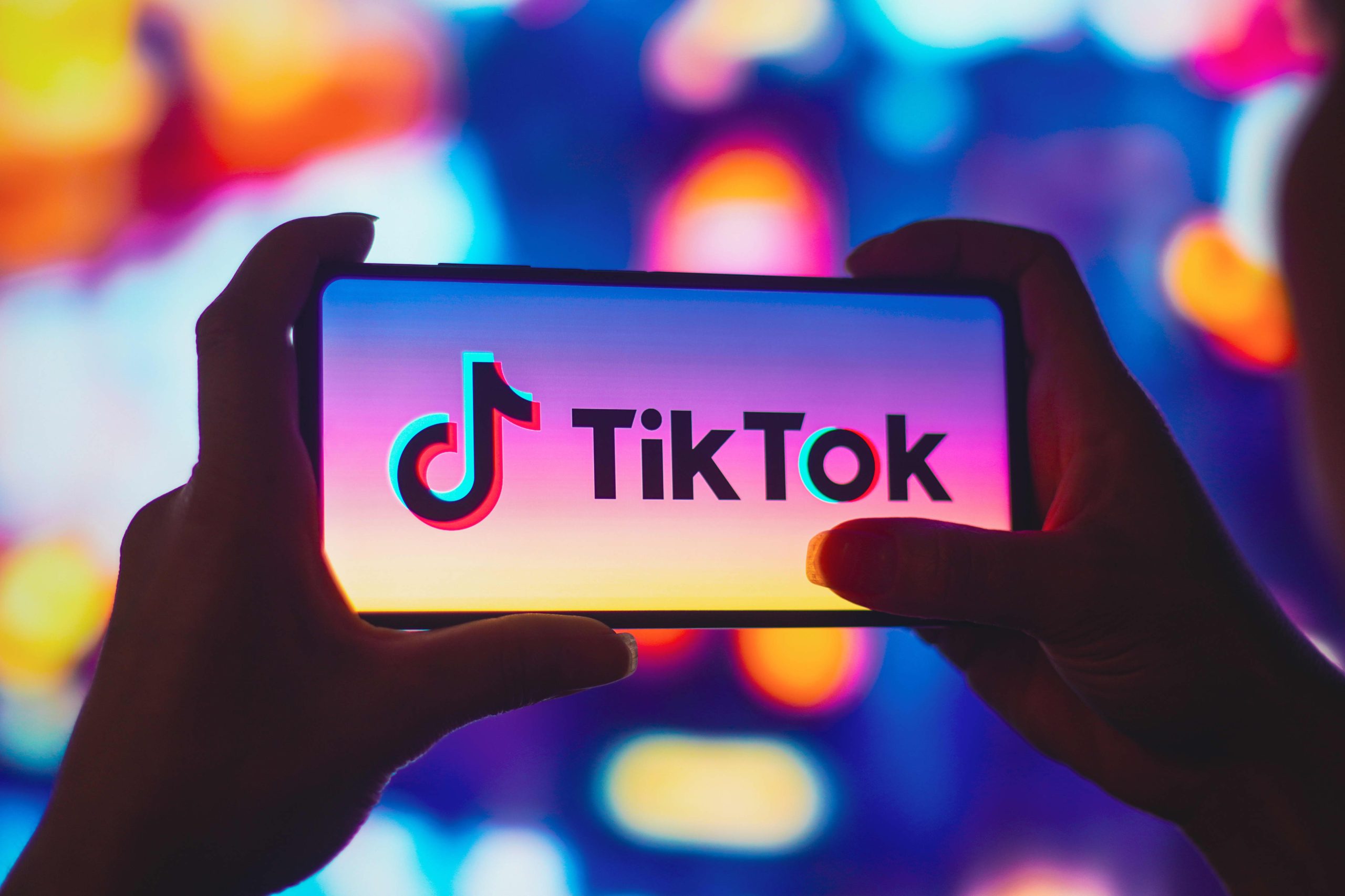
Why Your Dealership Must Pay Attention to TikTok
TikTok has been downloaded more than 3 billion times through the Google Play Store and Apple App Store in just six incredibly brief years since its debut. We still have a lot to educate you if you haven’t heard of TikTok yet. But even if you aren’t actively utilizing the site for your own personal scrolling, there’s a good chance that you have at least heard about it from friends and relatives. TikTok is a cutting-edge social networking site that focuses on sharing brief, real-life, relevant videos that users can personalize with eye-catching overlays and fashionable music. That seems excellent for passing a few minutes while you wait in the dentist’s waiting room or on the couch, but why should you care about TikTok in relation to a vehicle dealership? The main factor is that, in contrast to other major social media sites like Facebook, Instagram, and LinkedIn, users of TikTok can produce a diverse range of content that caters to the automobile industry, audience, and specialty. Let’s explore some of the justifications for why your dealership shouldn’t disregard TikTok. Boost Brand Awareness – By utilizing regionally relevant hashtags, let your local audience know you are in town. It will not only increase your web visibility but also communicate to your potential clientele that you are personable and willing to communicate. TikTok is no longer solely for Gen Z. On TikTok, people of all ages join together not only to learn and watch, but also to create. Affordable for advertisers – As you spend less money at the ad auction than Meta and use TikTok advertising to reach a large audience, “Your money won’t jiggle jiggle, it folds.” Less competition will allow your adverts to be seen by more users who are specifically interested in them. Businesses have the choice to produce organic content in addition to sponsored advertisements. Thanks to the sophisticated algorithm being used, if you continuously post on trend, a large audience will be able to see your organic TikToks. Your dealership can have TikTok ads running by the end of the week with the aid of SimpSocial! TikTok was never intended to feel like a polished platform, so connect with customers on a casual level. With the use of a casual, user-generated content strategy that is accessible to anyone with a smartphone, users are encouraged to promote and express themselves on the social channel. What does that imply for your auto dealer business? Authentic and affordable marketing Find out who might be interested in helping you develop your TikToks by talking to your staff. Using TikToks as a way to highlight new inventory, share car care advice, show off what’s going on in the store, show off what you like to get engaged with the community, or simply make your audience laugh are some typical strategies for auto dealerships. You might be attracting a customer base that was on the fence about visiting your business due to the stigma associated with “the hassles of car buying” by communicating on this casual, upbeat level. Simple to Discover and Apply New Trends – Ever hear someone say, “I saw it on TikTok”? This is as a result of Tiktok becoming THE platform where trends are born. A short glance at your “For You” page will provide you all the information you need if you want to stay up to date with what customers are interested in and talking about. When you find a trend you like, you may either use the audio or action to create unique material, create a duet, or edit the video with your opinion. There are countless potential outcomes. Who knows, you might come up with a brand-new piece of content that overnight becomes a greater fad than “It’s Corn!” Are you overwhelmed or excited by the platform’s limitless potential? Starting can seem like a huge task, but with the help of the SimpSocial team, you’ll be able to begin going right away. When raw footage is provided for Paid and Organic on TikTok, our team of social media specialists may advise you on trends, subjects, and even produce the content for you. Do you want to know more about how we can help your company succeed on TikTok? To schedule a FREE Social Health Check, contact us right now.THE TEXT GENERATION AS A CLIENT
 This year alone, about 1.5 million vehicles are expected to be sold per month. Every. Month. Is your dealership achieving record sales numbers as well, with record sales statistics for auto dealers in 2015 and projections for 2016 looking to be as forecasted?
This article discusses how to sell effectively across various generations utilizing a Texting Platform that everyone can use. What is the significance of this? This is significant since satisfied customers are more likely to buy and spend more money.
Millennials, with a population of 75.4 million in 2015, are the largest generation in the United States. Pew Internet Research (Pew Internet Research, 2015). The Baby Boomers have a population of 74.9 million people, and don’t forget about Generation X. Over three generations, that’s a lot of potential purchasing power.
For many dealerships, a current and major marketing difficulty is:
How does my dealership bridge the gap between the various generations’ preferred communication modes, from conventional advertising for older consumers who may still read a physical newspaper in the mornings to digital advertising for newer generations who have grown up in the digital age?
How do you effectively advertise, connect, and interact with potential consumers ranging in age from 18 to 99 in a way that is comfortable for them? The answer is straightforward: texting.
68 percent of Americans had a smartphone in 2015. (Pew Internet Research, 2015). When given the option, more than half of those surveyed choose to text rather than call; that’s 100 million people in the United States who prefer to connect primarily by text! Within 5 minutes of being sent, the bulk of those texts are opened and read!
GET IN TOUCH WITH MORE PEOPLE WHO WANT TO BUY YOUR PRODUCT
Texting is a very effective approach to reach more buyers, and it is mostly ignored by the car sector. Most Americans are texting these days, and have been for a time, whether they are young or elderly, using a smart phone or a dumb phone. Take a look out the window into your customer waiting area. How many of them are engrossed in their phones? Over 60% of phone users use their phones to assist them in purchasing a home, over 40% for banking and loans, and over 30% for vehicle purchases, with those percentages rapidly rising as society’s reliance on cell phones grows.
A good and well-managed texting campaign exposes your company to a previously unexplored and commonly used method of communication that is convenient for customers of all generations. In an era where the most popular social media can vary from month to month, a solid texting strategy will help you not only preserve client loyalty but also help you gain new consumers. Leaving you frustrated, hands in the air, over squandered Internet advertising time and time again.
REMAIN IN CONTROL OF YOUR COMMUNICATIONS
Texting is another area where your salespeople may easily take over if you don’t take charge of the process from the start. A dissatisfied employee leaving with a list of clients’ phone numbers, which he or she has been messaging, is the last thing you want. This is only one of the reasons why having the assistance of a trained and experienced texting partner is critical.
Increased response times and more comfortable, well-managed, and controlled dialogues with your customers result from a successful texting campaign, which leads to more walk-ins and vehicle sales. That’s why you need to work with a business that not only has experience, but also has the most up-to-date automotive text messaging technology to help you with this part of your marketing strategy.
This year alone, about 1.5 million vehicles are expected to be sold per month. Every. Month. Is your dealership achieving record sales numbers as well, with record sales statistics for auto dealers in 2015 and projections for 2016 looking to be as forecasted?
This article discusses how to sell effectively across various generations utilizing a Texting Platform that everyone can use. What is the significance of this? This is significant since satisfied customers are more likely to buy and spend more money.
Millennials, with a population of 75.4 million in 2015, are the largest generation in the United States. Pew Internet Research (Pew Internet Research, 2015). The Baby Boomers have a population of 74.9 million people, and don’t forget about Generation X. Over three generations, that’s a lot of potential purchasing power.
For many dealerships, a current and major marketing difficulty is:
How does my dealership bridge the gap between the various generations’ preferred communication modes, from conventional advertising for older consumers who may still read a physical newspaper in the mornings to digital advertising for newer generations who have grown up in the digital age?
How do you effectively advertise, connect, and interact with potential consumers ranging in age from 18 to 99 in a way that is comfortable for them? The answer is straightforward: texting.
68 percent of Americans had a smartphone in 2015. (Pew Internet Research, 2015). When given the option, more than half of those surveyed choose to text rather than call; that’s 100 million people in the United States who prefer to connect primarily by text! Within 5 minutes of being sent, the bulk of those texts are opened and read!
GET IN TOUCH WITH MORE PEOPLE WHO WANT TO BUY YOUR PRODUCT
Texting is a very effective approach to reach more buyers, and it is mostly ignored by the car sector. Most Americans are texting these days, and have been for a time, whether they are young or elderly, using a smart phone or a dumb phone. Take a look out the window into your customer waiting area. How many of them are engrossed in their phones? Over 60% of phone users use their phones to assist them in purchasing a home, over 40% for banking and loans, and over 30% for vehicle purchases, with those percentages rapidly rising as society’s reliance on cell phones grows.
A good and well-managed texting campaign exposes your company to a previously unexplored and commonly used method of communication that is convenient for customers of all generations. In an era where the most popular social media can vary from month to month, a solid texting strategy will help you not only preserve client loyalty but also help you gain new consumers. Leaving you frustrated, hands in the air, over squandered Internet advertising time and time again.
REMAIN IN CONTROL OF YOUR COMMUNICATIONS
Texting is another area where your salespeople may easily take over if you don’t take charge of the process from the start. A dissatisfied employee leaving with a list of clients’ phone numbers, which he or she has been messaging, is the last thing you want. This is only one of the reasons why having the assistance of a trained and experienced texting partner is critical.
Increased response times and more comfortable, well-managed, and controlled dialogues with your customers result from a successful texting campaign, which leads to more walk-ins and vehicle sales. That’s why you need to work with a business that not only has experience, but also has the most up-to-date automotive text messaging technology to help you with this part of your marketing strategy. FACEBOOK ADVERTISING VS. GOOGLE ADWORDS
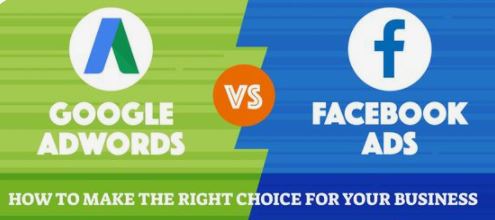 I had the privilege of attending the CBT Conference in Atlanta, GA in early March, as well as the PCG Companies training session that preceded the conference. Much of the conversation in automotive digital marketing is now focused on Google AdWords and the quality of website traffic generated.
We’ve been measuring our Google AdWords outcomes for the past decade by looking at CPC, Bounce Rates, Impression Share, and Click Through Rates. When cars were flying off the shelves, these simple measurements were ideal.
The quality of that traffic has decreased in recent years, and the cost per sold unit has risen dramatically. The fact that every dealership in your market is vying for the same set of customers isn’t helping matters. Now that sales have slowed, it’s time to examine those AdWords budgets more closely.
According to PCG’s study, around 80% of Google AdWords traffic to dealership websites is just consumers searching for the dealership’s name. There is no need to pay for clicks from those who would have found you otherwise. Essentially, your dealership’s Yellow Pages directory at an exorbitant charge.
When you factor in Bot and Service traffic, your AdWords budget is left with very few sales prospects. By installing VistaDash on your website, you can simply assess what is being generated, as well as track engagement and isolate bot traffic. You can score your phone calls as Sales/Service using a service like CallRevu.
When you go further into your AdWords traffic, you’ll rapidly notice that there are very few sales opportunities available. The ones you do have are usually shopping for the best deal, and they anticipate you to lose money while selling them a car. You’ve been informed you must be searching on Google. In the world of digital marketing, Google is the be-all and end-all. Google accounts for the majority of most dealerships’ digital spending. That’s where you’ve heard folks go to look for an automobile. So, what are your options?
The solution is right in front of your eyes. The majority of you use it several times during the day. Facebook! There was a lot of snake oil being marketed when Facebook first entered the market. Vendors informing you that by creating a Facebook page, generating some Fans/Likes, and starting to post some amazing engaging content, they may improve sales by $500-$1,000 per month. It was supposed to be a simple and inexpensive approach to increase car sales.
I was one of the first merchants to jump on board. I switched my focus away from direct mail and toward Facebook marketing. I spent eight years trying to figure out how to assist car dealers sell more cars for less money. The industry, as well as myself, took the incorrect approach to this. Remember, nothing worthwhile in life is free or simple!
Everything we knew about marketing was turned upside down. We’ve even been instructed that you “don’t sell automobiles on social,” and that you should post interesting stuff that isn’t even relevant to your brand. Vendors and dealers did this in order to combat Facebook’s constantly changing algorithms aimed at reducing the quantity of spam content their users were exposed to. They also aimed to push marketers into a Pay-to-Play strategy in order to boost their profits.
Our clients have chosen a different strategy during the last year. Many of our clients have switched major sections of their expenditures from Google to Facebook by investing in “paid” Facebook ads. About a year ago, Facebook launched something called Lead Gen Ads. It gave us a way to create significant volumes of leads from paid ads for the first time.
These adverts, when combined with the appropriate response mechanisms, demonstrated that these are real people interested in discussing car purchases. Many of them aren’t in the market when they see the Facebook ad, allowing the dealership first chance at the customer’s business and avoiding having to compete with every other dealer in town.
Frank Hyundai’s General Manager, John Carlson, spent $10,000 on paid Facebook advertising in February. A large portion of this budget was redirected from Google AdWords. They moved from producing low-conversion clicks and few new sales prospects to receiving over 500 text messages about buying a car. They’ve significantly raised sales and gross margins on each device sold. They’re connecting with customers in ways that their competitors aren’t. This provides them with the competitive advantage they require to dominate their market.
I had the privilege of attending the CBT Conference in Atlanta, GA in early March, as well as the PCG Companies training session that preceded the conference. Much of the conversation in automotive digital marketing is now focused on Google AdWords and the quality of website traffic generated.
We’ve been measuring our Google AdWords outcomes for the past decade by looking at CPC, Bounce Rates, Impression Share, and Click Through Rates. When cars were flying off the shelves, these simple measurements were ideal.
The quality of that traffic has decreased in recent years, and the cost per sold unit has risen dramatically. The fact that every dealership in your market is vying for the same set of customers isn’t helping matters. Now that sales have slowed, it’s time to examine those AdWords budgets more closely.
According to PCG’s study, around 80% of Google AdWords traffic to dealership websites is just consumers searching for the dealership’s name. There is no need to pay for clicks from those who would have found you otherwise. Essentially, your dealership’s Yellow Pages directory at an exorbitant charge.
When you factor in Bot and Service traffic, your AdWords budget is left with very few sales prospects. By installing VistaDash on your website, you can simply assess what is being generated, as well as track engagement and isolate bot traffic. You can score your phone calls as Sales/Service using a service like CallRevu.
When you go further into your AdWords traffic, you’ll rapidly notice that there are very few sales opportunities available. The ones you do have are usually shopping for the best deal, and they anticipate you to lose money while selling them a car. You’ve been informed you must be searching on Google. In the world of digital marketing, Google is the be-all and end-all. Google accounts for the majority of most dealerships’ digital spending. That’s where you’ve heard folks go to look for an automobile. So, what are your options?
The solution is right in front of your eyes. The majority of you use it several times during the day. Facebook! There was a lot of snake oil being marketed when Facebook first entered the market. Vendors informing you that by creating a Facebook page, generating some Fans/Likes, and starting to post some amazing engaging content, they may improve sales by $500-$1,000 per month. It was supposed to be a simple and inexpensive approach to increase car sales.
I was one of the first merchants to jump on board. I switched my focus away from direct mail and toward Facebook marketing. I spent eight years trying to figure out how to assist car dealers sell more cars for less money. The industry, as well as myself, took the incorrect approach to this. Remember, nothing worthwhile in life is free or simple!
Everything we knew about marketing was turned upside down. We’ve even been instructed that you “don’t sell automobiles on social,” and that you should post interesting stuff that isn’t even relevant to your brand. Vendors and dealers did this in order to combat Facebook’s constantly changing algorithms aimed at reducing the quantity of spam content their users were exposed to. They also aimed to push marketers into a Pay-to-Play strategy in order to boost their profits.
Our clients have chosen a different strategy during the last year. Many of our clients have switched major sections of their expenditures from Google to Facebook by investing in “paid” Facebook ads. About a year ago, Facebook launched something called Lead Gen Ads. It gave us a way to create significant volumes of leads from paid ads for the first time.
These adverts, when combined with the appropriate response mechanisms, demonstrated that these are real people interested in discussing car purchases. Many of them aren’t in the market when they see the Facebook ad, allowing the dealership first chance at the customer’s business and avoiding having to compete with every other dealer in town.
Frank Hyundai’s General Manager, John Carlson, spent $10,000 on paid Facebook advertising in February. A large portion of this budget was redirected from Google AdWords. They moved from producing low-conversion clicks and few new sales prospects to receiving over 500 text messages about buying a car. They’ve significantly raised sales and gross margins on each device sold. They’re connecting with customers in ways that their competitors aren’t. This provides them with the competitive advantage they require to dominate their market. CHAT, PHONE CALL, AND EMAIL VS. TEXT MESSAGE
 The most prevalent mode of contact between us is text messaging. Text Messages can be sent and received by anyone with a cell phone. When it comes to connecting with customers, the car sector needs to start taking text messages seriously.
Let’s start with talk. Chat is a fantastic way to capture clients who are browsing your site. The most serious issue is that customers must remain on your website in order to communicate with you. Frequently, you will be left with a ghost lead and no way to contact the customer. Even if you obtain contact information, you are unable to contact the customer via phone or email. No one picks up the phone or checks their emails these days.
The next option is email; however, text messages are considerably superior to email in every way. It’s a basic fact that text messages are read and responded to at a higher rate than emails. Here’s an article from CallHub that highlights some of the many advantages of text messaging over email. Click Here to Read the Article Let’s be honest. Email is on its way out. It’s growing less probable that your email will be opened as more spam enters the inbox.
Finally, Phone Calls, millennials, millennials, millennials, millennials, millennials, millennials, millennials They simply do not enjoy answering the phone these days. Have you ever attempted to phone your children only to be forced to text them instead? If you have to call them, it doesn’t matter how many leads you create. You’ll make ten calls, and you’ll be lucky if even one of them picks up the phone. We all know that people prefer to communicate with others via text before conversing on the phone. Phone calls are still useful; it’s just easier to acclimate folks to the phone call by sending a text message first!
We take Text Message very seriously at SIMPSOCIAL! It’s not an afterthought that we’ve tacked on to our main offering. It’s what we’re known for. To make managing and following up on Text Message leads a breeze, we’ve integrated Artificial Intelligence and sales workflows. With a 180-day lead follow-up, you can stay in touch with a consumer until they Buy or Die!
In today’s society, text messaging is simply the best means of communication. Let’s boost your website’s performance and begin taking text messages seriously. From this page, you may try out our widget. It’s the Text Us Power Button, which is placed at the bottom right of the website. It’s worth a shot. This can be easily integrated into any car website to begin producing Opt-In Text Message leads right away!
The most prevalent mode of contact between us is text messaging. Text Messages can be sent and received by anyone with a cell phone. When it comes to connecting with customers, the car sector needs to start taking text messages seriously.
Let’s start with talk. Chat is a fantastic way to capture clients who are browsing your site. The most serious issue is that customers must remain on your website in order to communicate with you. Frequently, you will be left with a ghost lead and no way to contact the customer. Even if you obtain contact information, you are unable to contact the customer via phone or email. No one picks up the phone or checks their emails these days.
The next option is email; however, text messages are considerably superior to email in every way. It’s a basic fact that text messages are read and responded to at a higher rate than emails. Here’s an article from CallHub that highlights some of the many advantages of text messaging over email. Click Here to Read the Article Let’s be honest. Email is on its way out. It’s growing less probable that your email will be opened as more spam enters the inbox.
Finally, Phone Calls, millennials, millennials, millennials, millennials, millennials, millennials, millennials They simply do not enjoy answering the phone these days. Have you ever attempted to phone your children only to be forced to text them instead? If you have to call them, it doesn’t matter how many leads you create. You’ll make ten calls, and you’ll be lucky if even one of them picks up the phone. We all know that people prefer to communicate with others via text before conversing on the phone. Phone calls are still useful; it’s just easier to acclimate folks to the phone call by sending a text message first!
We take Text Message very seriously at SIMPSOCIAL! It’s not an afterthought that we’ve tacked on to our main offering. It’s what we’re known for. To make managing and following up on Text Message leads a breeze, we’ve integrated Artificial Intelligence and sales workflows. With a 180-day lead follow-up, you can stay in touch with a consumer until they Buy or Die!
In today’s society, text messaging is simply the best means of communication. Let’s boost your website’s performance and begin taking text messages seriously. From this page, you may try out our widget. It’s the Text Us Power Button, which is placed at the bottom right of the website. It’s worth a shot. This can be easily integrated into any car website to begin producing Opt-In Text Message leads right away! 